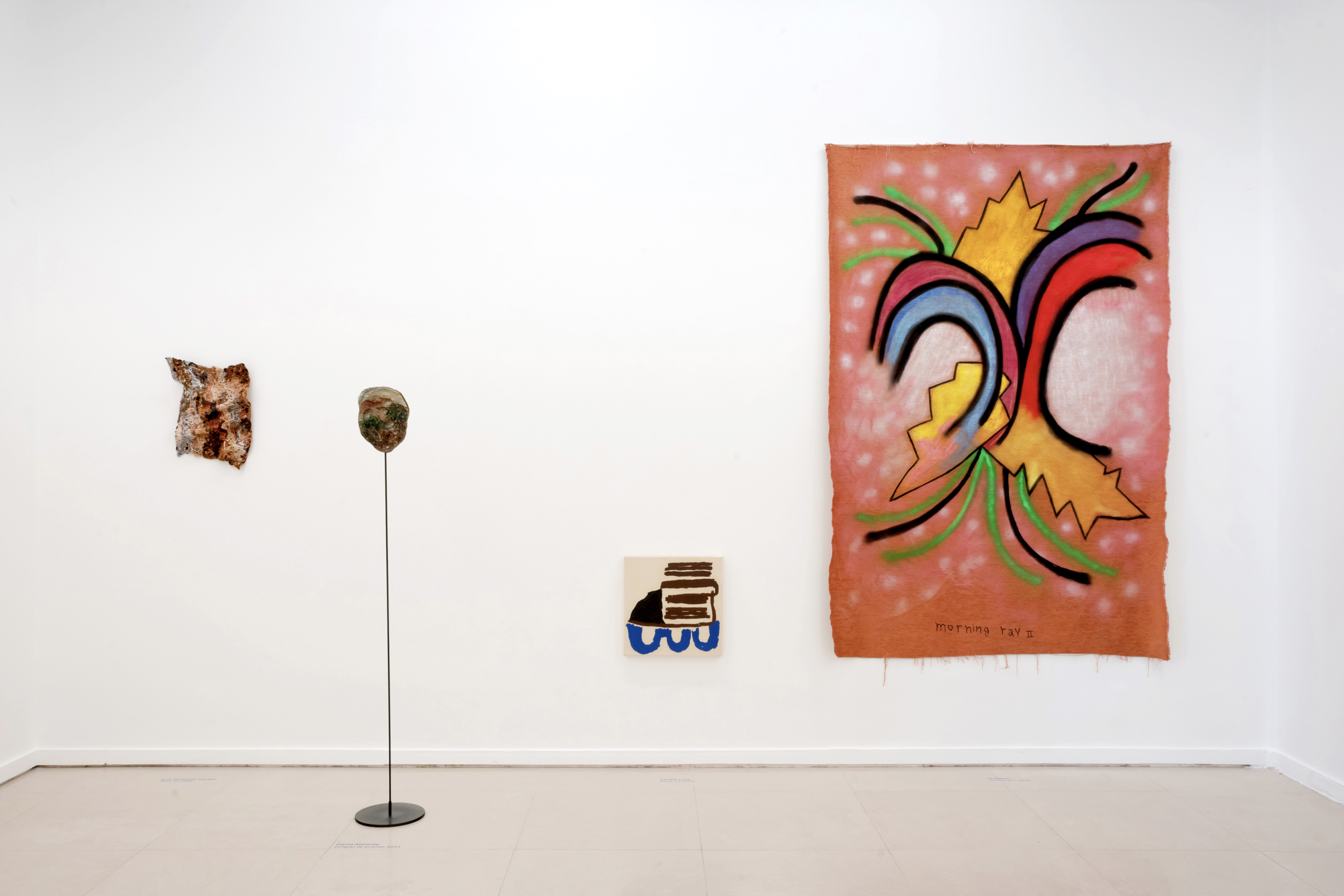

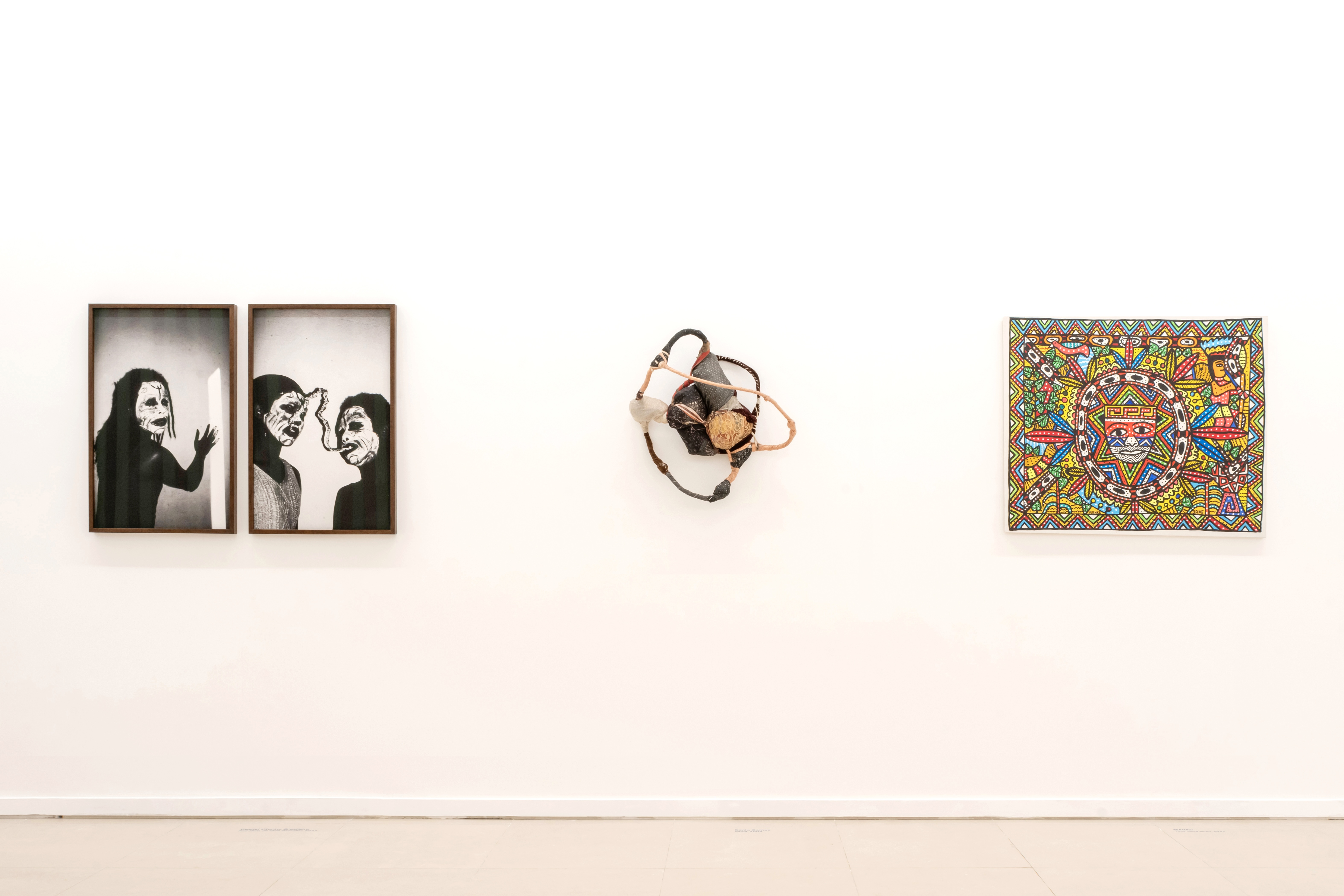



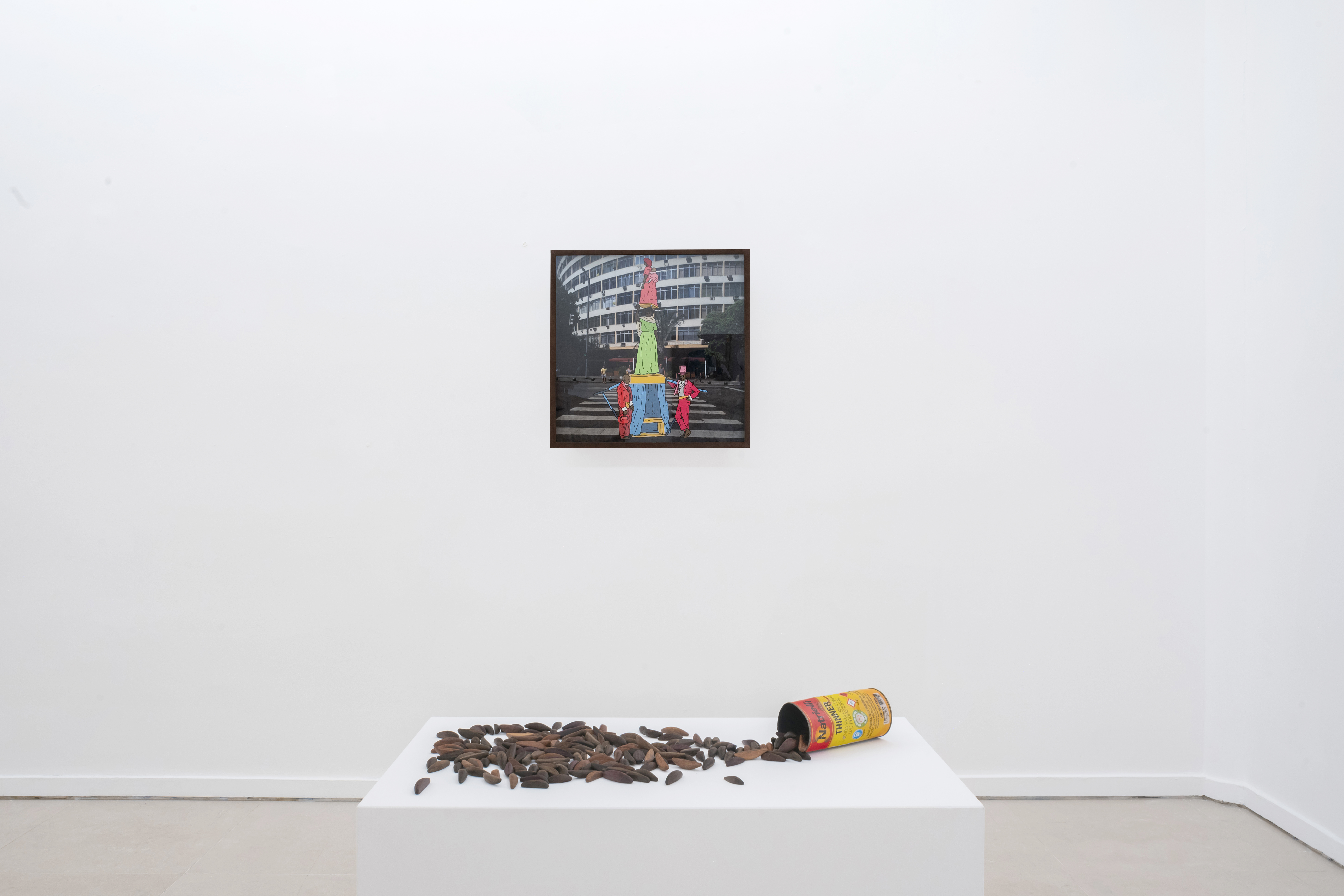
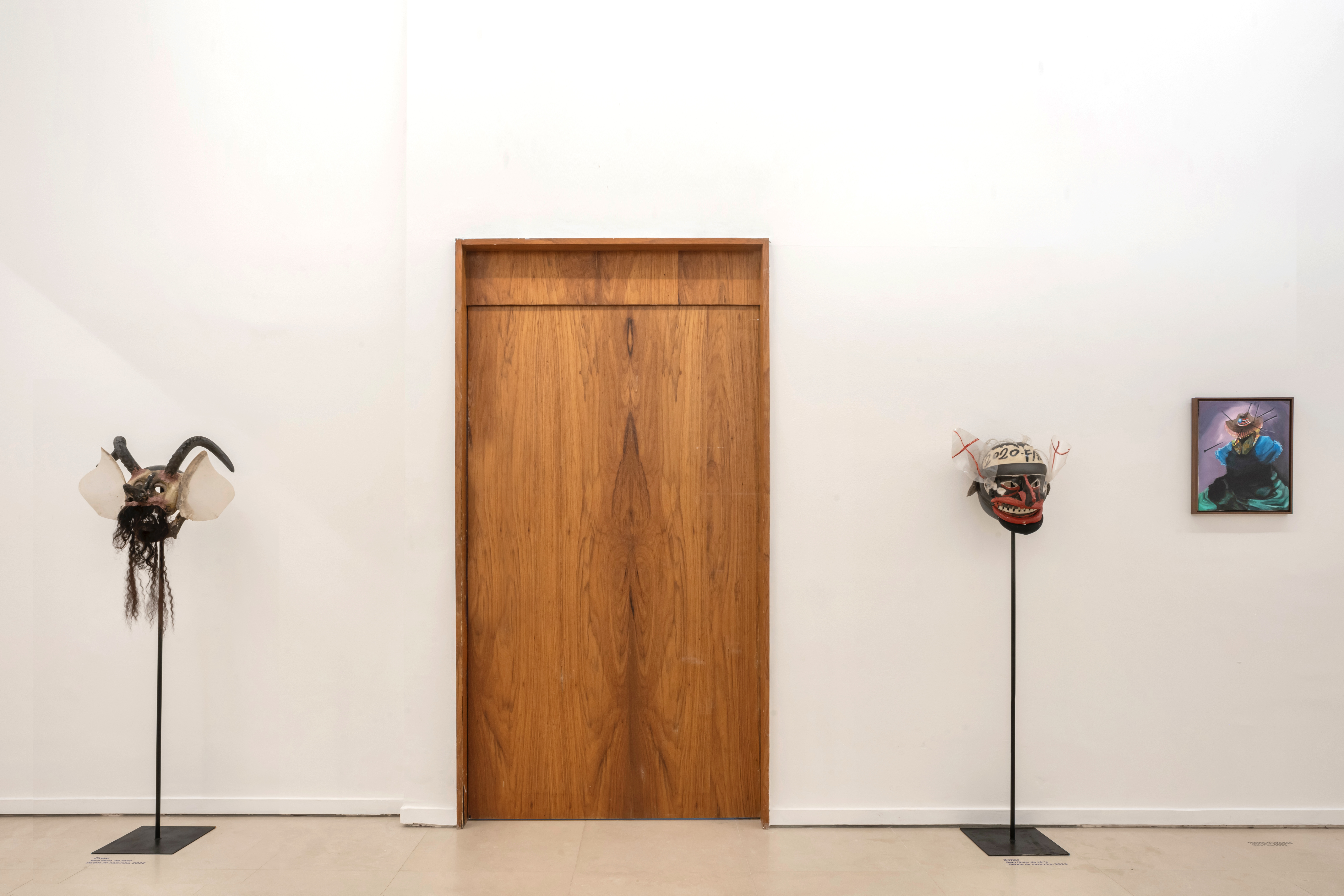

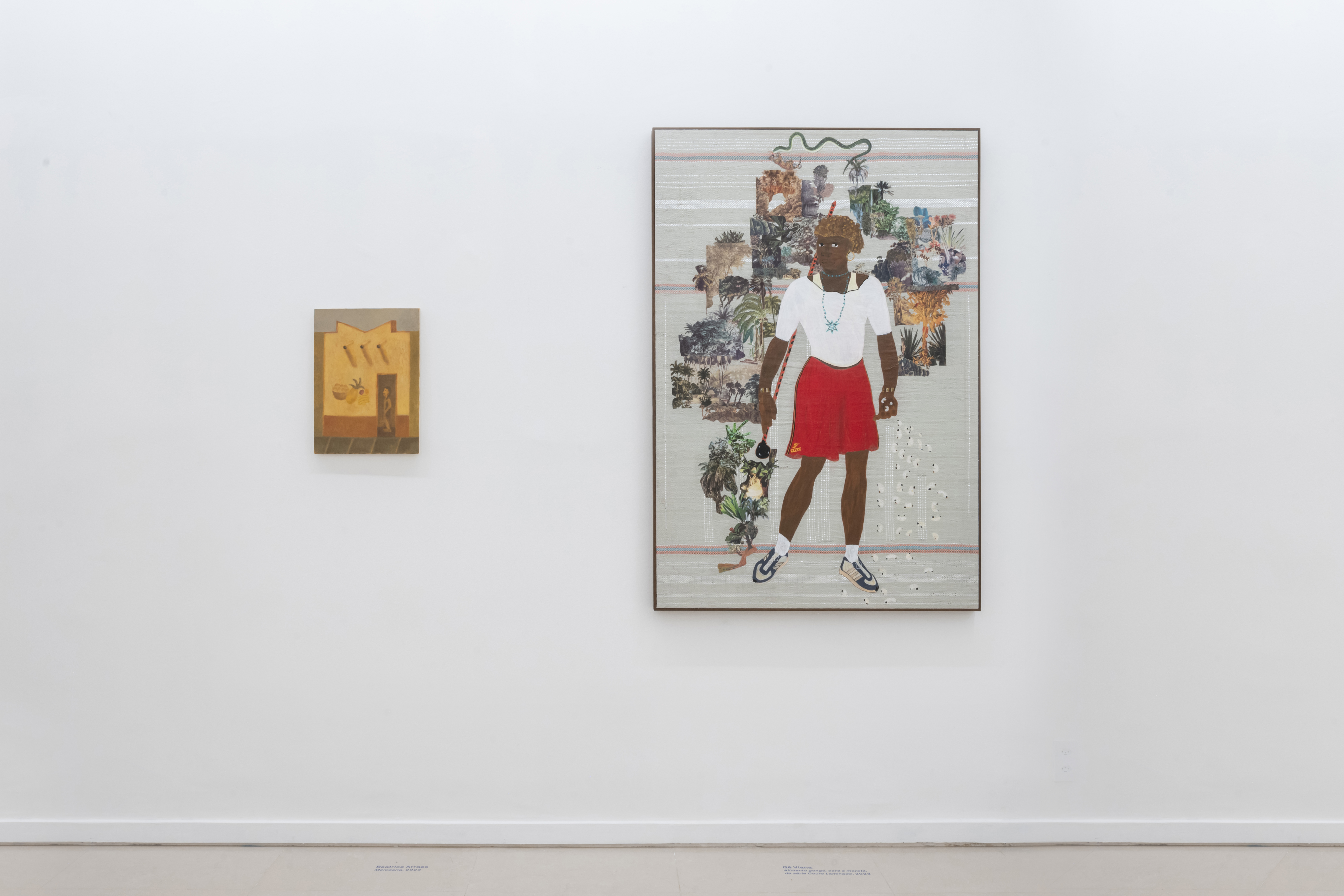
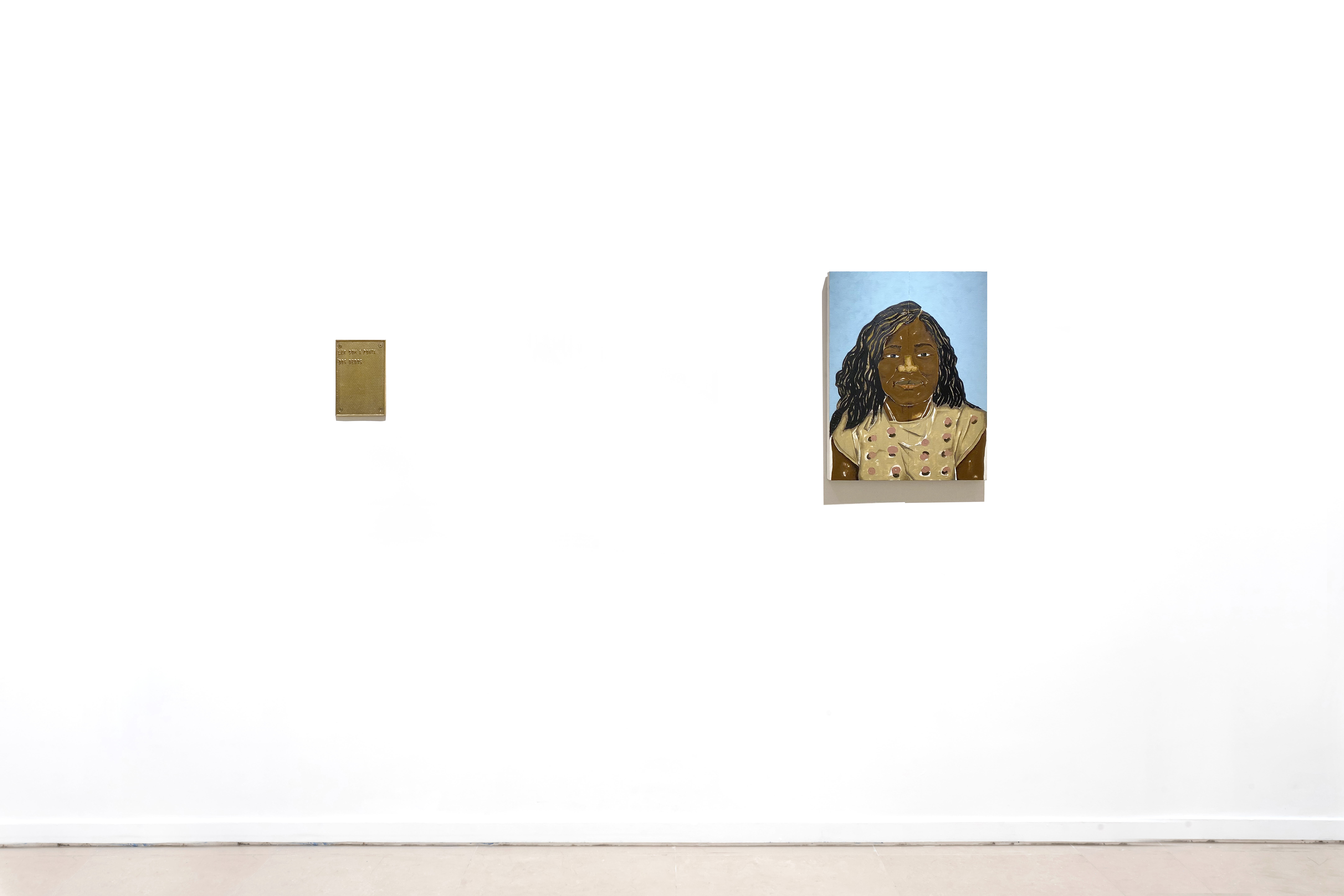
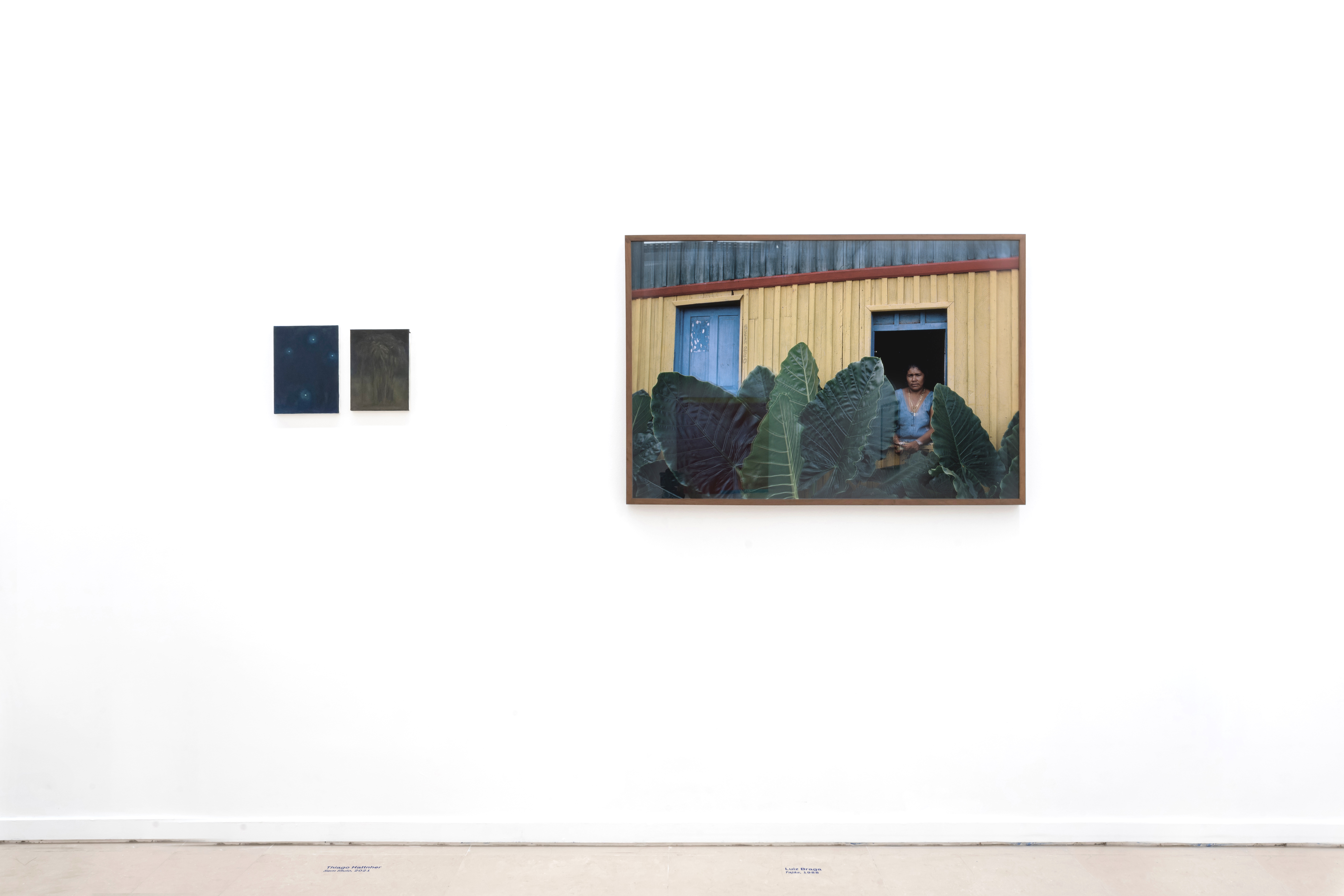

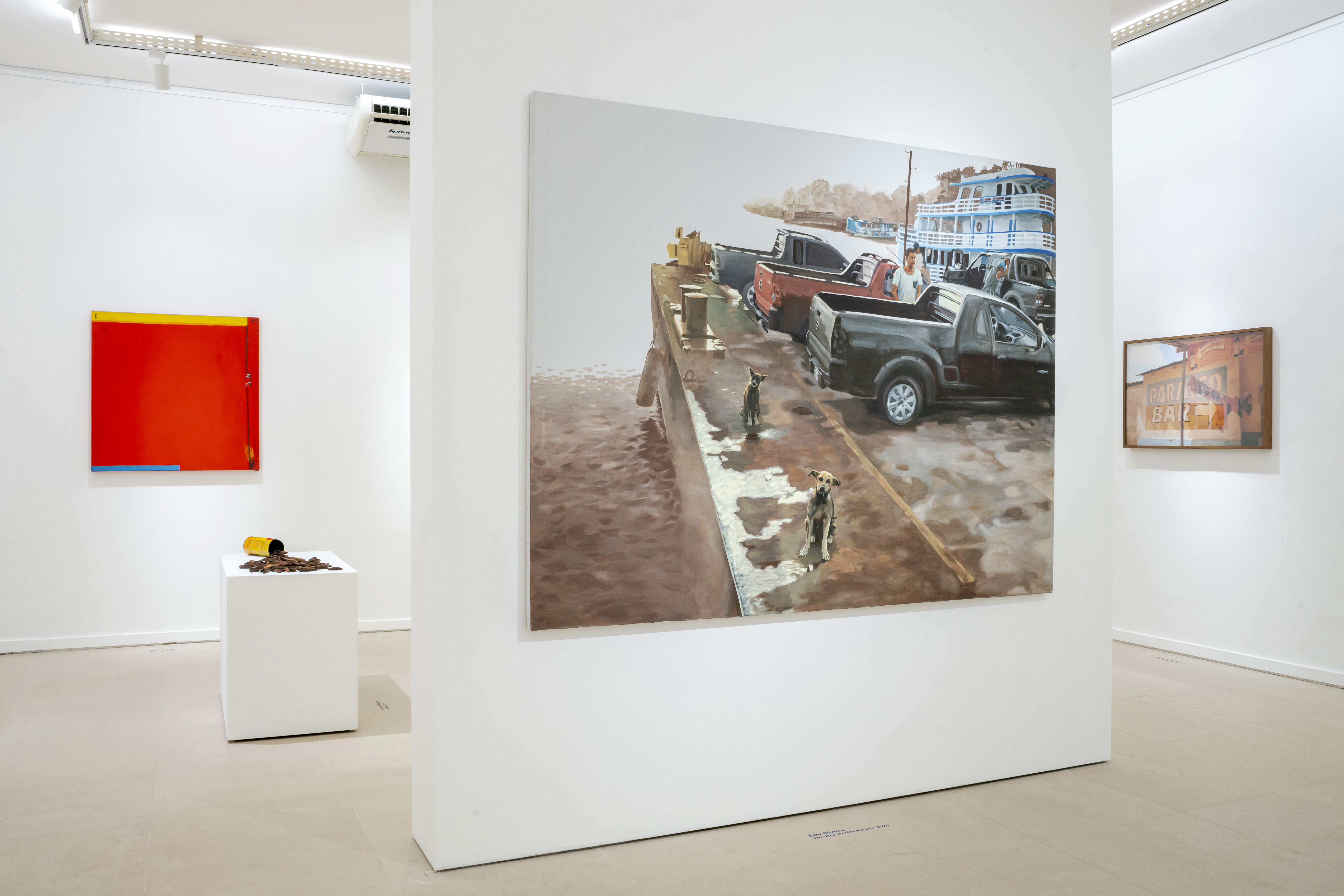
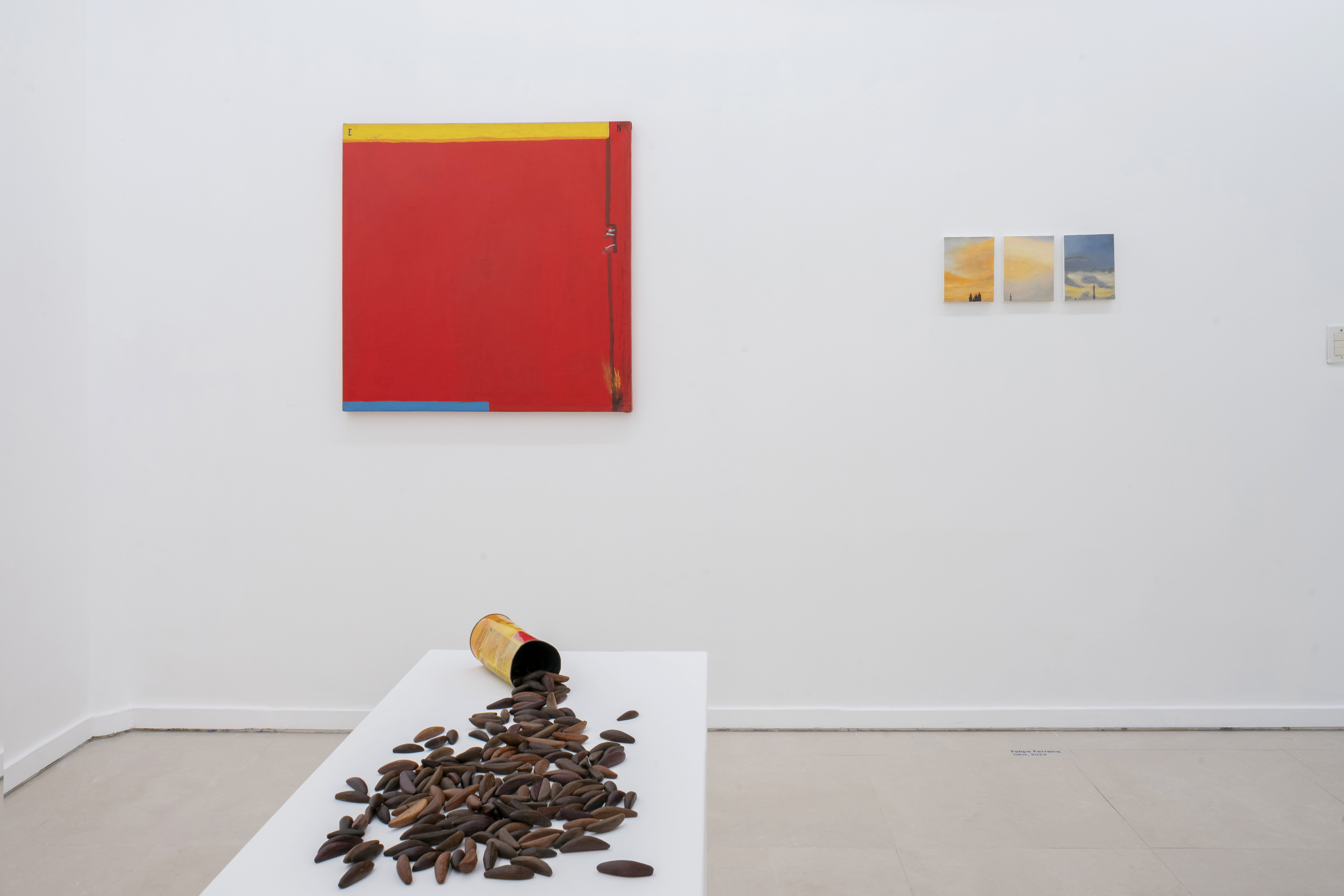
Máscara, maré, memória, Lima Galeria, 2023.
2023. Lima Galeria
Máscara, maré, memória
Curadoria de exposição coletiva de 33 artistas brasileiros em São Luís
CATÁLOGO (pt-en)
PRESS (seLecT)
PRESS (Prêmio PIPA)
PRESS (SP-Arte)
PRESS (ArtRio)
PRESS (ArtSampa)
PRESS (Imirante)
PRESS (Itaú Cultural)
Curadoria de exposição coletiva de 33 artistas brasileiros em São Luís
CATÁLOGO (pt-en)
PRESS (seLecT)
PRESS (Prêmio PIPA)
PRESS (SP-Arte)
PRESS (ArtRio)
PRESS (ArtSampa)
PRESS (Imirante)
PRESS (Itaú Cultural)
Beatrice Arraes, Castiel Vitorino Brasileiro, Cecília Lima, Dalton Paula, David Almeida, Dinho Araújo, Éder Oliveira, Edu de Barros, Emmanuel Nassar, Fábio Menino, Fátima Campos, Fefa Lins, Felipe Ferreira, Gê Viana, Guilherme Callegari, Ivan Grilo, Letícia Lopes, Luiz Braga, Luiz Fernando Dantas, MAHKU (Movimento dos Artistas Huni Kuin), Márcia Falcão, Márcio Vasconcelos, Marcone Moreira, Mateus Moreira, PV Dias, Silvana Mendes, Sonia Gomes, Tadáskía, Tassila Custodes, Thiago Hattnher, Thiago Martins de Melo, Vicente Martins Jr., Zimar
15.06–19.08.2023
Lima Galeria, São Luís, Maranhão
Máscara, maré, memória apresenta pontes poéticas e imagéticas entre produções de artistas nordestinos e nortistas atuantes com obras de brasileiros de outras geografias, propondo leituras horizontais, sem as segregações hierárquicas impostas pelo mercado e pelas instituições de arte que privilegiam artistas sudestinos pouco expostos no Maranhão. A partir dessas múltiplas conexões, a mostra argumenta que a cena local partilha núcleos questionadores com as esferas artísticas nacional e internacional, não apenas provando falsa a noção de atraso e subdesenvolvimento usualmente atrelada à região, mas exemplificando seu pioneirismo e sua sofisticação, à frente em questões centrais no panorama artístico.
Desse modo, embora os trabalhos se conectem em muitas frentes, há especificidades locais que irradiam nas múltiplas subjetividades de cada artista. Essas singularidades são exibidas de forma honrosa, rejeitando noções de exotismo e ingenuidade, destacando os hibridismos culturais que as estruturam através de intercâmbios forçados ou voluntários. Amplificando essas nuances plurais, a exposição é organizada em três núcleos temáticos que a intitulam e que sugerem reflexões acerca das obras.
![Sonia Gomes, 'Patuá', 2005, tecidos e vergalhão de ferro, 50 x 50 x 30 cm]()
![Castiel Vitorino Brasileiro, sem título, da série 'Corpoflor', 2022, fotografia em papel algodão, 80 x 53 cm (cada)]()
![MAHKU (Movimento dos Artistas Huni Kuin), 'Yube nawa ainbu', 2021, acrílica sobre tela, 76 x 94 cm]()
![Dinho Araújo, 'História dos Animais e Árvores (Mutum-Cavalo) Aparição', 2021, fotogradia em papel Hahnemühle Photo Rag 308g, 60 x 90 cm, registro por Jefferson Santiago]()
![Dinho Araújo, 'Careta de cazumba', 2022, couro curtido, corrido, tecido, bordado e contas, 33 x 22 x 9 cm]()
![Silvana Mendes, sem título, 2023, acrílica e colagem de papel sobre tela, 74 x 74 cm]()
![Tassila Custodes, 'Ideia Fixa', 2023, acrílica sobre tela, 42 x 35 cm]()
![Zimar, sem título, da série 'Careta de cazumba', 2022, polipropileno de capacetes descartados, plástico, borracha, cabelo sintético de peruca e tinta, 70 x 55 x 36 cm]()
![Zimar, sem título, da série 'Careta de cazumba', 2022, polipropileno de capacetes descartados, plástico, papel macjê, cabelo sintético de petuca e tinta, 40 x 59 x 39 cm]()
![Márcia Falcão, 'Posição 8', da série 'Ioga Psicológica', 2023, óleo sobre tela, 100 x 80 cm]()
![Letícia Lopes, 'Fire dream with me', 2023, óleo sobre linho, 170 x 100 cm]()
![Fefa Lins, 'Autorretrato reclinado com e sem seios', 2020, óleo sobre tela, 130 x 105 cm]()
![Vista do núcleo 'Máscara']()
![Vista do núcleo 'Máscara']()
![Vista do núcleo 'Máscara']()
![Vista do núcleo 'Máscara']()
Máscara expõe trabalhos que não se utilizam do artifício do disfarce como negação da individualidade, mas como ferramenta de possibilidades outras de existência, de busca pelo corpo em plenitude em outras realidades. Manifestações culturais são pintadas, costuradas, bordadas e adornadas por mãos que invocam entidades, adicionando ou removendo camadas aparentes à carne viva das histórias pessoais, dos desejos de ser. A máscara, em sua ambiguidade, possibilita tanto um escape da dureza da repressão a corpos socialmente oprimidos quanto a celebração e a recuperação orgulhosa de quem se verdadeiramente é — através e apesar da corporeidade. Comporta-se como objeto transicional e enfatizador das duas instâncias que conecta. Interpretada não como instrumento de ilusão, a máscara é levantada como um estandarte bradado em honra.
![Thiago Martins de Melo, 'Moiras do Rio Preguiças', 2019, óleo, spray, resina de poliéster e poliuretano sobre tela, 241 x 160,5 x 22,5 cm]()
![Tadáskía, 'morning ray II', 2022, spray, carvão e pastel oleoso sobre tecido, 208 x 105 cm]()
![David Almeida, 'Coração de Ipueiras', 2021, óleoo sobre cerâmica terracota e suporte metálico, 22,5 x 17,5 x 3 cm + 130 cm (suporte)]()
![Ivan Grilo, 'O que posso segurar nas mãos (ou um pouco da presença de M. Antônio), 2023, tinta acrílica e impressão em papel, éter, copo americano, prateleira em ferro, madeira, gravação sobre lenço, 30 x 150 x 10 cm]()
![Cecília Lima, 'Carga n. 2', 2021, óleo e acrílica sobre tela, 40 x 40 cm]()
![Luiz Fernando Dantas, 'Corpo #3', 2022, tapeçaria em lã, fios e cabos de cobre, 44 x 37 x 5 cm]()
![Mateus Moreira, 'Coalizão', 2023, óleo sobre tela, 100 x 120 cm]()
![Mateus Moreira, 'Emboscada', 2023, óleo sobre tela, 40 x 30 cm]()
![Márcio Vasconcelos, sem título, da série 'A estética do terreiro', 2012, fotografia em papel Hahnemühle Photo Rag 308g, 60 x 90 cm]()
![Fábio Menino, 'Hand with candle', 2022, óleo e cera de abelha sobre tela, 55 x 44 cm]()
![Tassila Custodes, 'Amazônicos', 2022, acrílica sobre tela, 42 x 35 cm]()
![Vista do núcleo 'Maré']()
![Vista do núcleo 'Maré']()
![Vista do núcleo 'Maré']()
![Vista do núcleo 'Maré']()
Maré ilustra o rompante de força natural que oscila pela atração gravitacional entre a lua e a terra sobre a água do mar. Na quebra das ondas sobre a orla, ela se dissipa em som, cheiro e atmosfera. Além de fenômeno geofísico, a maré é potência imaterial concentrada e viva; é entidade multissensorial que provoca a calma do pertencimento, das relações de conforto entre o corpo e o lugar. Retoma um pensamento expandido e hiperconectado, em que as situações macrocósmicas interferem nas subjetividades espirituais e nos eventos físicos menores. Rege o que se serve à mesa, do defeso à rede cheia; o que vem ao mundo e dá à luz; o banho à preamar. Sabe-se que se é de um lugar pela maré — não só água física, mas fluxo memorial mesmo de onde não há água, de lembranças que oscilam e constituem a noção de lar. Na maré, se espelha a volta de ancestralidades perdidas nas violências atlânticas, capilarizadas pelos rios que entremeiam a nossa terra.
![Éder Oliveira, sem título, da série 'Margem', 2021, óleo sobre tela, 150 x 190 cm]()
![Dalton Paula, 'Catarina Mina', 2019, óleo e folha de ouro sobre tela, 61 x 45 cm]()
![Luiz Braga, 'Tajás', 1988, fotografia em papel Hahnemühle Photo Rag 308g, 70 x 105 cm]()
![Thiago Hattnher, sem título, 2021, óleo sobre tela, 24 x 40 cm (díptico)]()
![Gê Viana, 'Alimento gongo, coró e morotó', da série 'Couro laminado', 2023, colagem manual, tinta acrílica, caneta possa sobre ráfia laminada com poliéster metalizado, 130 x 90 cm]()
![Beatrice Arraes, 'Mercearia', 2023, óleo sobre tela, 40 x 30 cm]()
![Ivan Grilo, 'Ler com a ponta dos dedos', 2022, bronze, 20 x 13 cm]()
![Emmanuel Nassar, sem título, 2000, técnica mista sobre tela, 90 x 90 cm]()
![Marcone Moreira, 'Dádivas', 2021, lata metálica e madeira, dimensões variáveis]()
![Felipe Ferreira, 'Céu XIV', Céu XVII', 'Céu XVIII', 2023, óleo sobre linho, 20 x 15 (cada)]()
![PV Dias, 'Força (d)e trabalho', 2019, pintura digital sobre fotografia impressa em papel algodão, 50 x 50 cm]()
![Edu de Barros, 'Cabum II', 2021, acrílica, grafite, pastel oleoso e spray sobre tela, 130 x 122 cm]()
![Vicente Martins Jr., 'Paraíso Bar', 2019, Fotografia em papel Hahnemühle Photo Rag 308g, 60 x 90 cm]()
![Guilherme Callegari, 'ghhj', 2023, óleo sobre tela, 100 x 70 cm]()
![Fátima Campos, 'Composição de Medusas', 2023, cerâmica e pintura em óxidos, 30 x 38 x 30 (cada)]()
![Vistas do núcleo 'Memória']()
![Vistas do núcleo 'Memória']()
![Vistas do núcleo 'Memória']()
![Vistas do núcleo 'Memória']()
![Vistas do núcleo 'Memória']()
![Vistas do núcleo 'Memória']()
![Vistas do núcleo 'Memória']()
![Vistas do núcleo 'Memória']()
![Vistas do núcleo 'Memória']()
![Vistas do núcleo 'Memória']()
Memória reflete sobre a fragmentação de lembranças individuais e autobiográficas, mas que podem operar em um senso memorial coletivo através de imagens atravessantes e sobreviventes. Como podemos falar coletivamente de memória, quando essa é tão íntima e pessoal? De que forma imagens podem transbordar as individualidades e abranger uma comoção coletiva, ricocheteando e transpassando novamente cada um dos observadores em pontos singulares? Questionador, o núcleo se propõe a analisar imagens e narrativas que fluem e esvanecem no tempo sem registro, amplificando a nostalgia do dispositivo memorial, ao mesmo tempo que propõe o resgate de lembranças apagadas ou perdidas, reelaboradas em novas imagens.
/
Máscara, mare, memória [that can be translated as Mask, tide, memory] presents poetic and imagetic bridges between productions by active artists from the north and northeast region of Brazil amongst works by Brazilians from other geographies, proposing horizontal readings, without the hierarchical segregations imposed by the market and art institutions that privilege southeastern artists little rarely in Maranhão. From these multiple connections, the show argues that the local scene shares questioning cores with the national and international artistic panorama, not only proving false the notion of delay and underdevelopment usually linked to the region but exemplifying its pioneering spirit and sophistication, ahead in central issues in the artistic spheres.
Thus, although the works connect by many approaches, local specificities radiate in the multiple subjectivities of each artist. These singularities are displayed in an honorable way, rejecting notions of exoticism and naivety, highlighting the cultural hybridities that structure them through forced or voluntary historical exchanges. Amplifying these plural nuances, the exhibition is organized into three thematic cores that entitle it and that suggest reflections on the works.
Máscara [Mask] exhibit works that do not use the artifice of disguise as a denial of individuality but as a tool of other possibilities of existence, of searching for the body in plenitude in other realities. Cultural manifestations are painted, sewn, embroidered, and adorned by hands that invoke entities, adding or removing apparent layers to the living flesh of personal stories and desires to be(come). The mask, in its ambiguity, enables both an escape from the harshness of repression of socially oppressed bodies and a celebration and proud recovery of who one truly is — through and despite corporeality. It behaves as a transitional object and emphasizes the two instances it connects. Interpreted not as an instrument of illusion, the mask is raised like an honorably raised flag.
Maré [Tide] illustrates the surge of natural force that oscillates due to the gravitational attraction between the moon and the earth over seawater. As the waves crash over the shore, it dissipates into sound, smell, and atmosphere. In addition to being a geophysical phenomenon, the tide is a concentrated and living immaterial power; it is a multisensory entity that provokes the calmness of belonging, of the comfortable relations between the body and the place. It resumes an expanded and hyperconnected thought, in which macrocosmic situations interfere with spiritual subjectivities and smaller physical events. It governs what is served at the table, from closed season to full network; what comes into the world and gives birth; the bath at high tide. One knows that one is from a place by the tide — not just physical water, but a memorial flow even where there is no water, of memories that oscillate and constitute the notion of home. In the tide, the return of ancestors lost in the Atlantic violence is mirrored, capillarized by the rivers that intertwine our lands.
Memória [Memory] reflects on the fragmentation of individual and autobiographical memories but can operate in a collective memorial sense through traversing and surviving images. How can we altogether talk about memory, when it is so intimate and personal? How can images overflow individualities and encompass a collective commotion, ricocheting and passing through each of the observers again in singular points? Questioning, the nucleus proposes to analyze images and narratives that flow and disappear in unrecorded time, amplifying the nostalgia of the memorial device, at the same time that it proposes the rescue of erased or lost memories, re-elaborated in new images.
CURADORIA [CURATED BY]
Mateus Nunes
PROJETO GRÁFICO [GRAPHIC DESIGN]
Matheus Ramassini
PRODUÇÃO [PRODUCTION]
Gabriel Xavier
FOTOS DA EXPOSIÇÃO [INSTALLATION VIEWS]
Jesús Pérez
FOTOS DAS OBRAS [ARTWORKS REPRODUCTIONS]
João Henrique Lima, Jesús Pérez, Wesley Cristyan
AGRADECIMENTOS [THANKS TO]
Aos artistas convidados [To the invited artists]; a Germano Dushá, Lucas Nunes, Marco Antonio Lima, Fatima Lima, João Henrique Lima e [and] Luis Felipe Lima; às galerias [to the galleries] Albuquerque Contemporânea, Almeida & Dale, Amparo 60, Carmo Johnson Projects, Fortes D’Aloia & Gabriel, Leonardo Leal, Leme, Mendes Wood DM, Millan, Mitre, Sé, Superfície, VERVE.
Texto originalmente publicado na exposição ‘Máscara, maré, memória’, na Lima Galeria, em São Luís, inaugurada em 15 de junho de 2023
15.06–19.08.2023
Lima Galeria, São Luís, Maranhão
Pela maré, à luz do luar,
dança a máscara que trago na memória.
Os nós da rede e na garganta
voltam e vão e não se emaranham,
mas, como se de mãos dadas,
conduzem um ao outro nos fluxos
da água que quebra sobre o calhau —
onde houve o primeiro beijo, o último choro,
o eterno sonho.
Lembro-me de tudo, até do amanhã.
Máscara, maré, memória apresenta pontes poéticas e imagéticas entre produções de artistas nordestinos e nortistas atuantes com obras de brasileiros de outras geografias, propondo leituras horizontais, sem as segregações hierárquicas impostas pelo mercado e pelas instituições de arte que privilegiam artistas sudestinos pouco expostos no Maranhão. A partir dessas múltiplas conexões, a mostra argumenta que a cena local partilha núcleos questionadores com as esferas artísticas nacional e internacional, não apenas provando falsa a noção de atraso e subdesenvolvimento usualmente atrelada à região, mas exemplificando seu pioneirismo e sua sofisticação, à frente em questões centrais no panorama artístico.
Desse modo, embora os trabalhos se conectem em muitas frentes, há especificidades locais que irradiam nas múltiplas subjetividades de cada artista. Essas singularidades são exibidas de forma honrosa, rejeitando noções de exotismo e ingenuidade, destacando os hibridismos culturais que as estruturam através de intercâmbios forçados ou voluntários. Amplificando essas nuances plurais, a exposição é organizada em três núcleos temáticos que a intitulam e que sugerem reflexões acerca das obras.



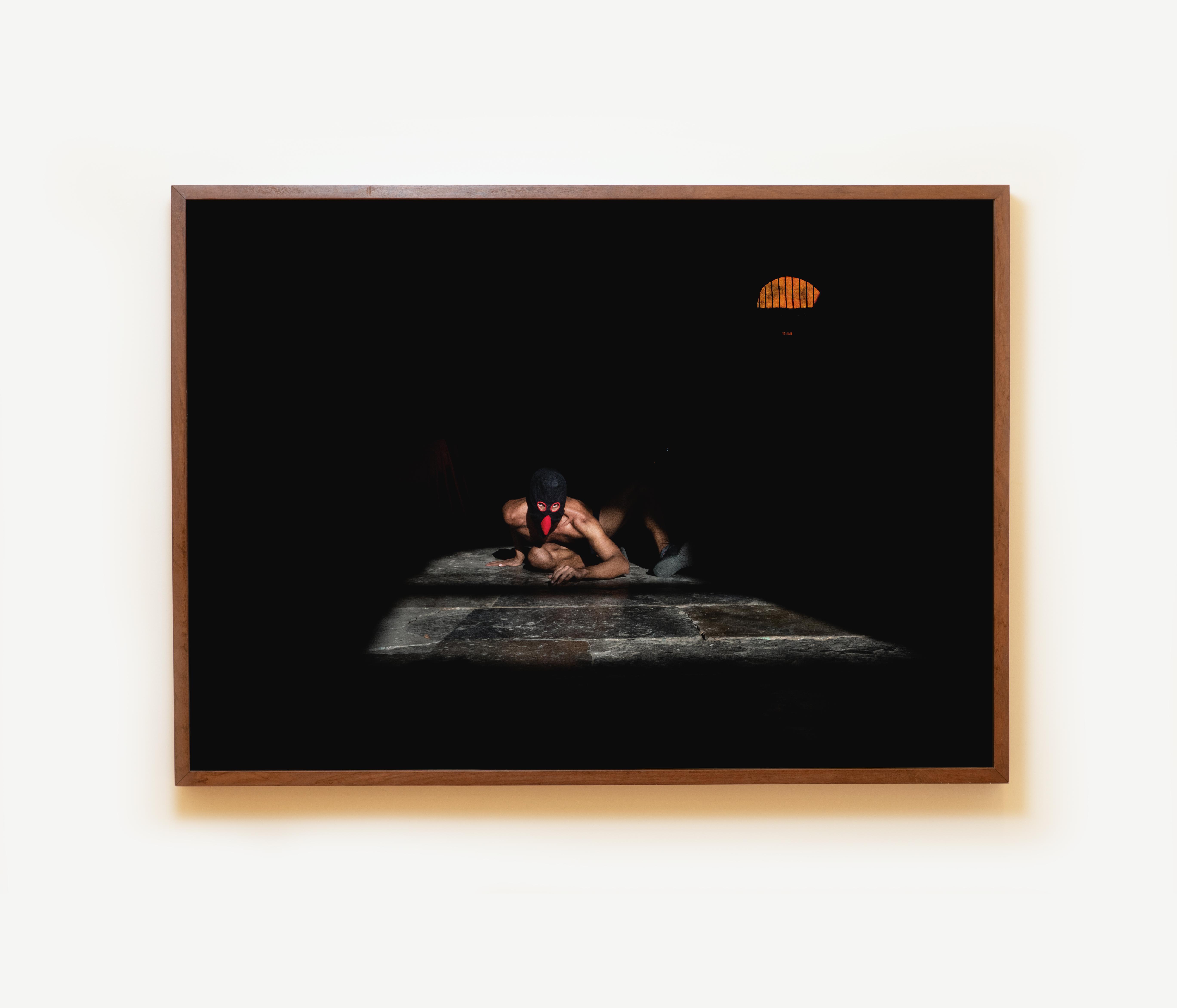
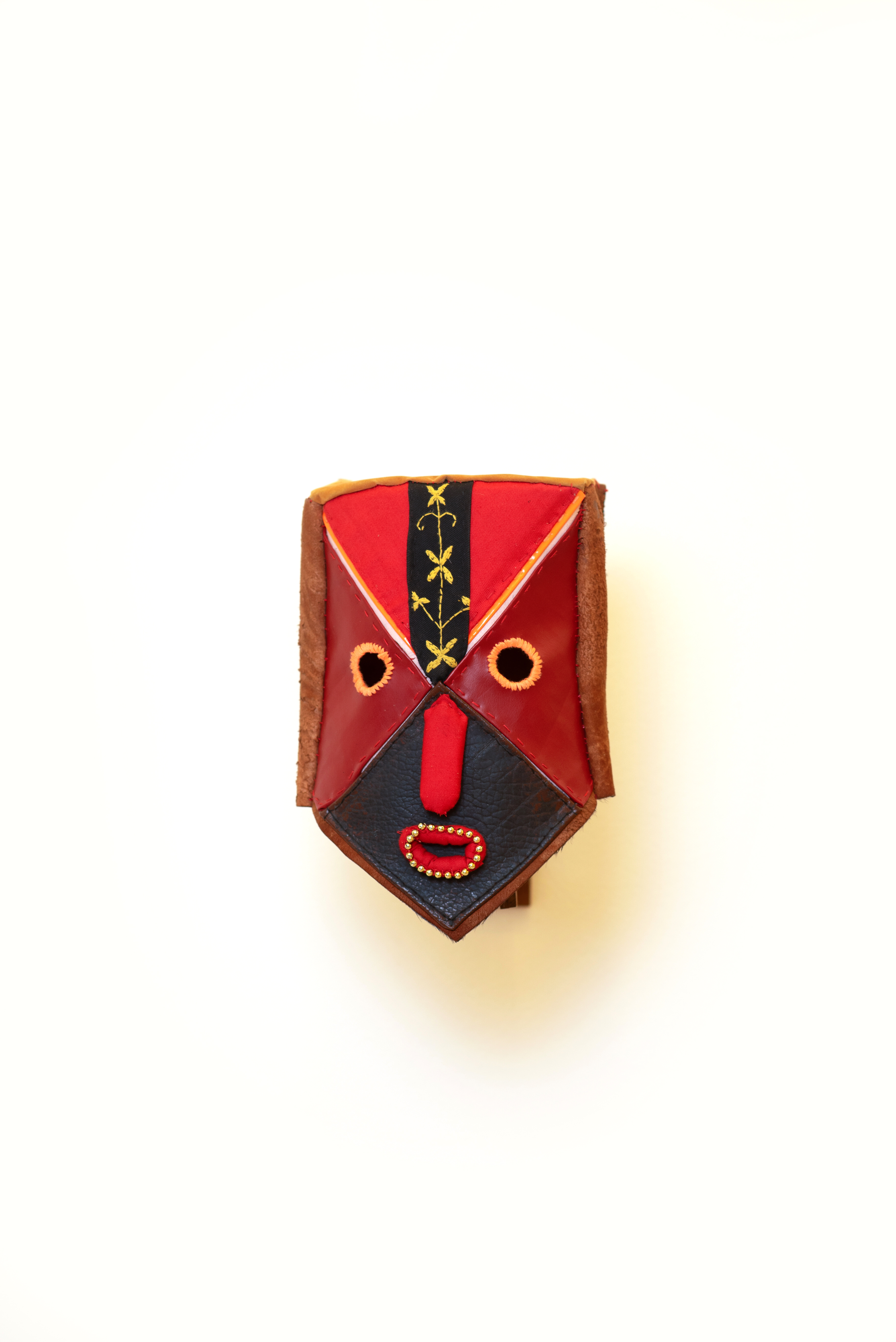
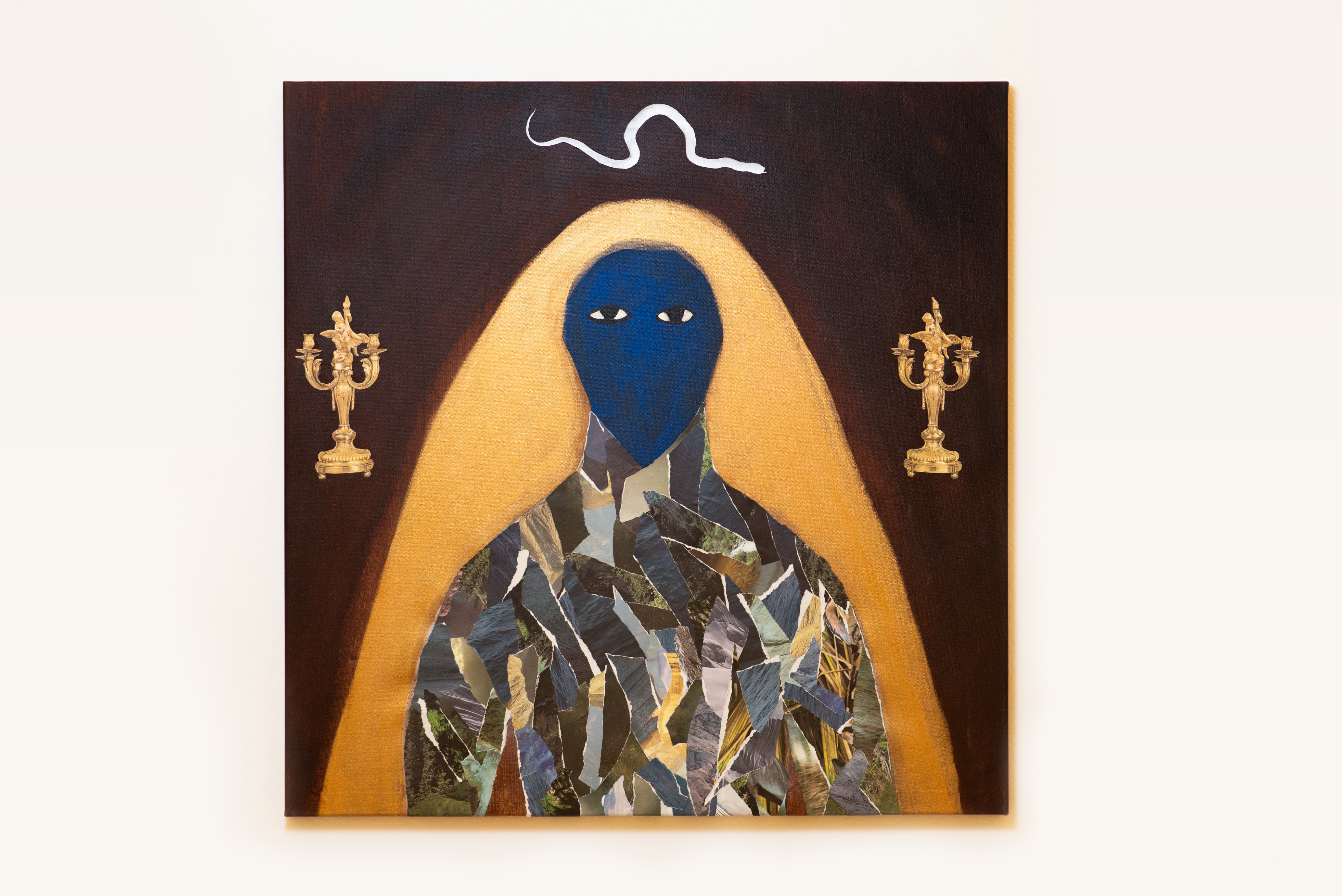


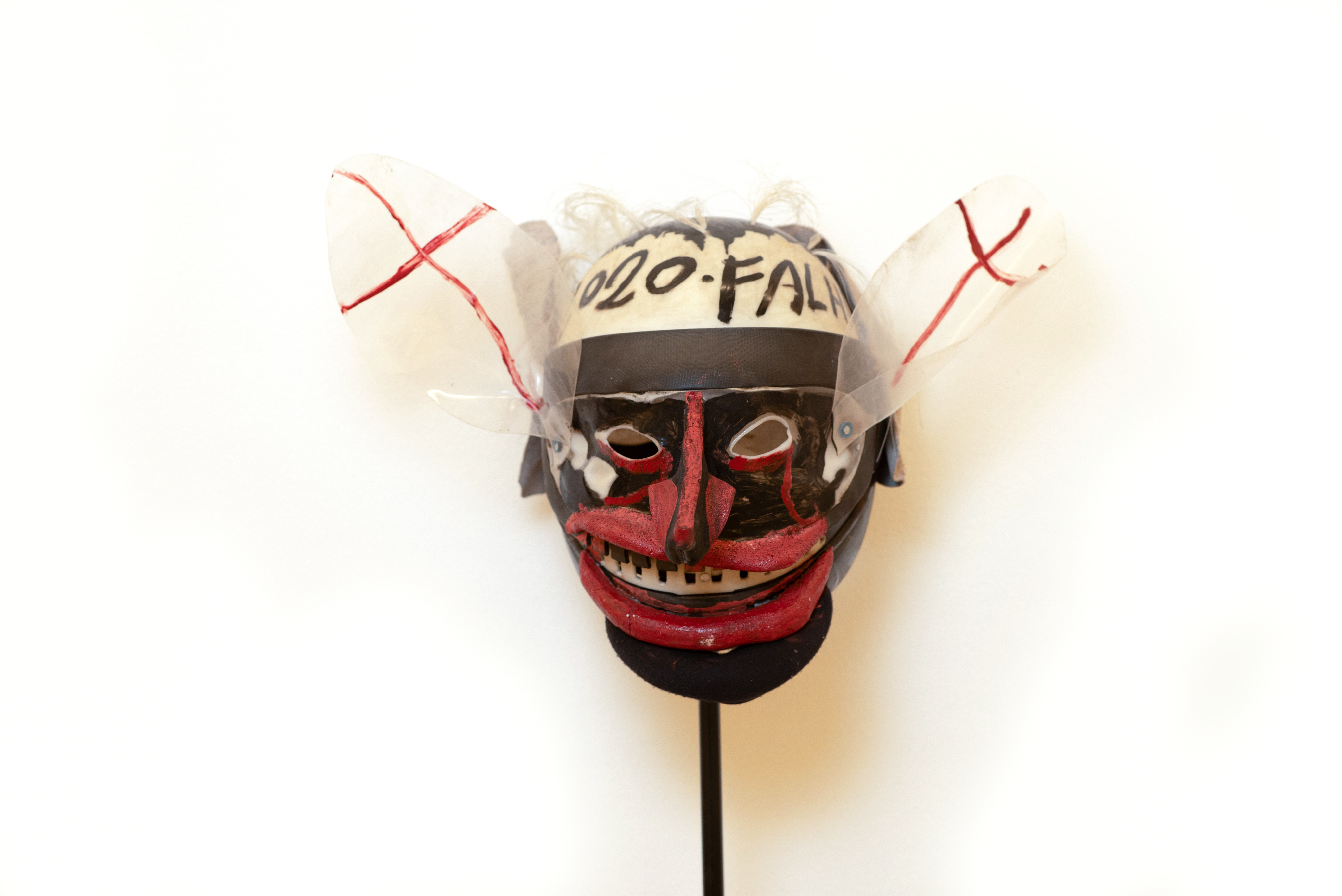
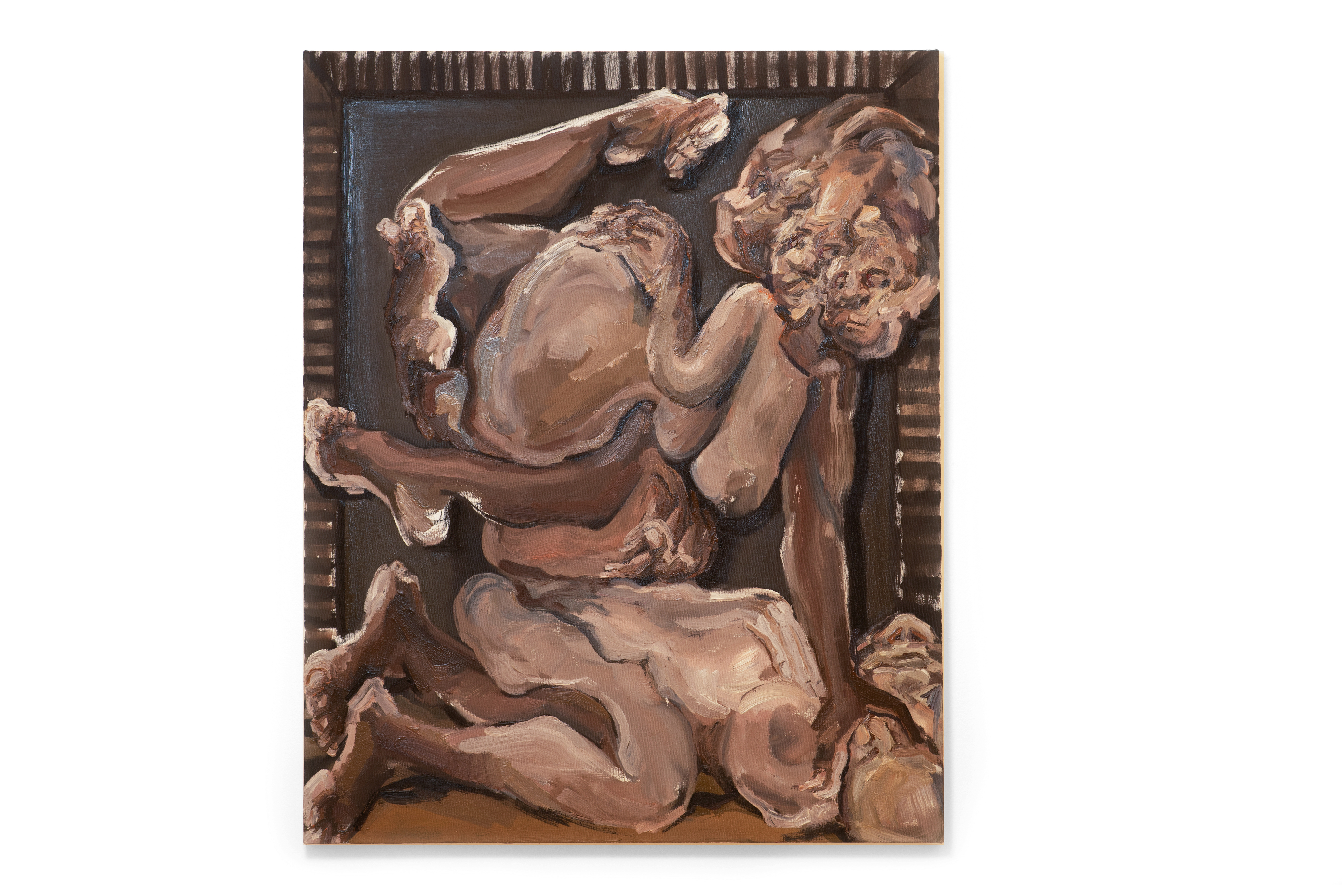






Máscara expõe trabalhos que não se utilizam do artifício do disfarce como negação da individualidade, mas como ferramenta de possibilidades outras de existência, de busca pelo corpo em plenitude em outras realidades. Manifestações culturais são pintadas, costuradas, bordadas e adornadas por mãos que invocam entidades, adicionando ou removendo camadas aparentes à carne viva das histórias pessoais, dos desejos de ser. A máscara, em sua ambiguidade, possibilita tanto um escape da dureza da repressão a corpos socialmente oprimidos quanto a celebração e a recuperação orgulhosa de quem se verdadeiramente é — através e apesar da corporeidade. Comporta-se como objeto transicional e enfatizador das duas instâncias que conecta. Interpretada não como instrumento de ilusão, a máscara é levantada como um estandarte bradado em honra.
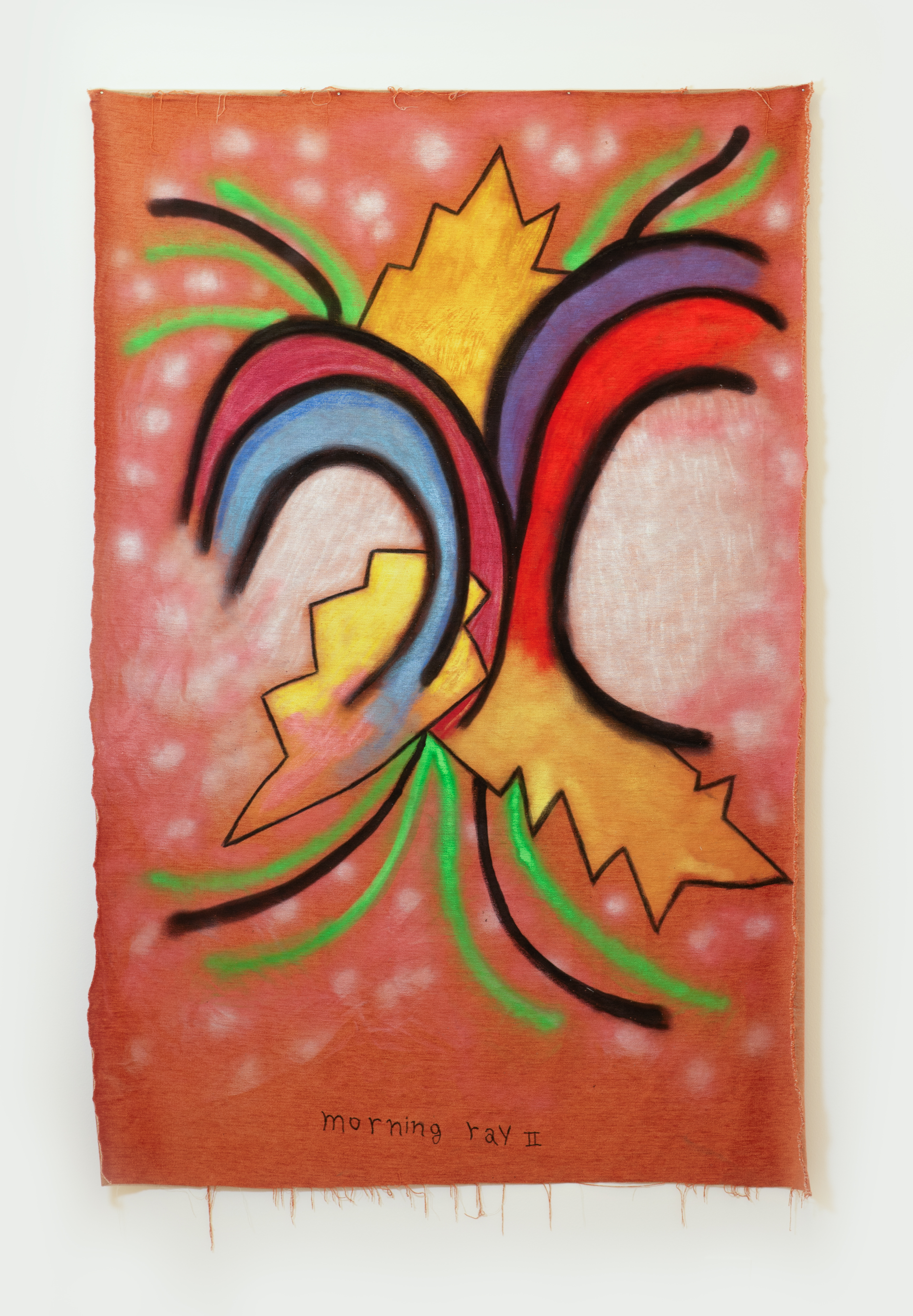
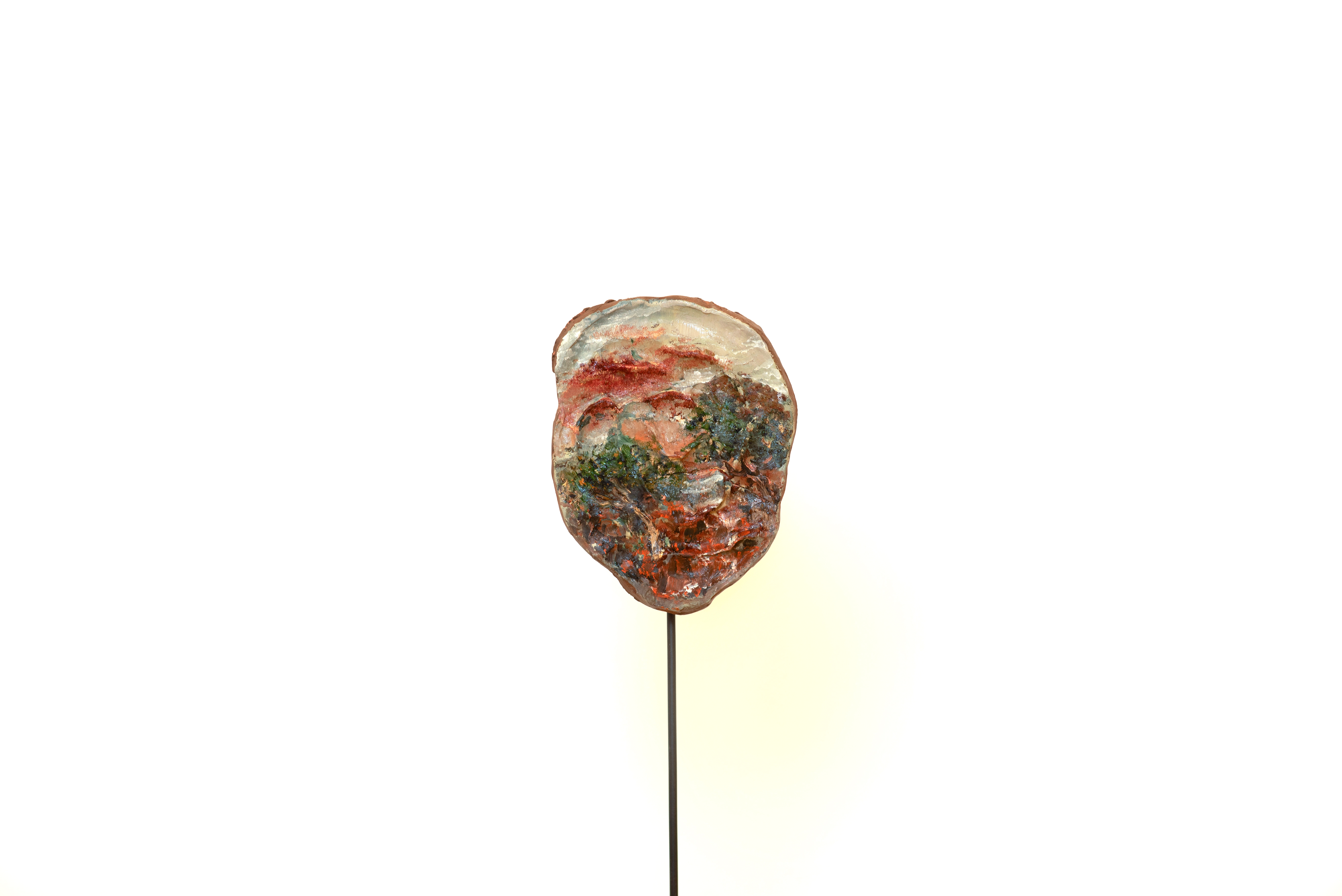


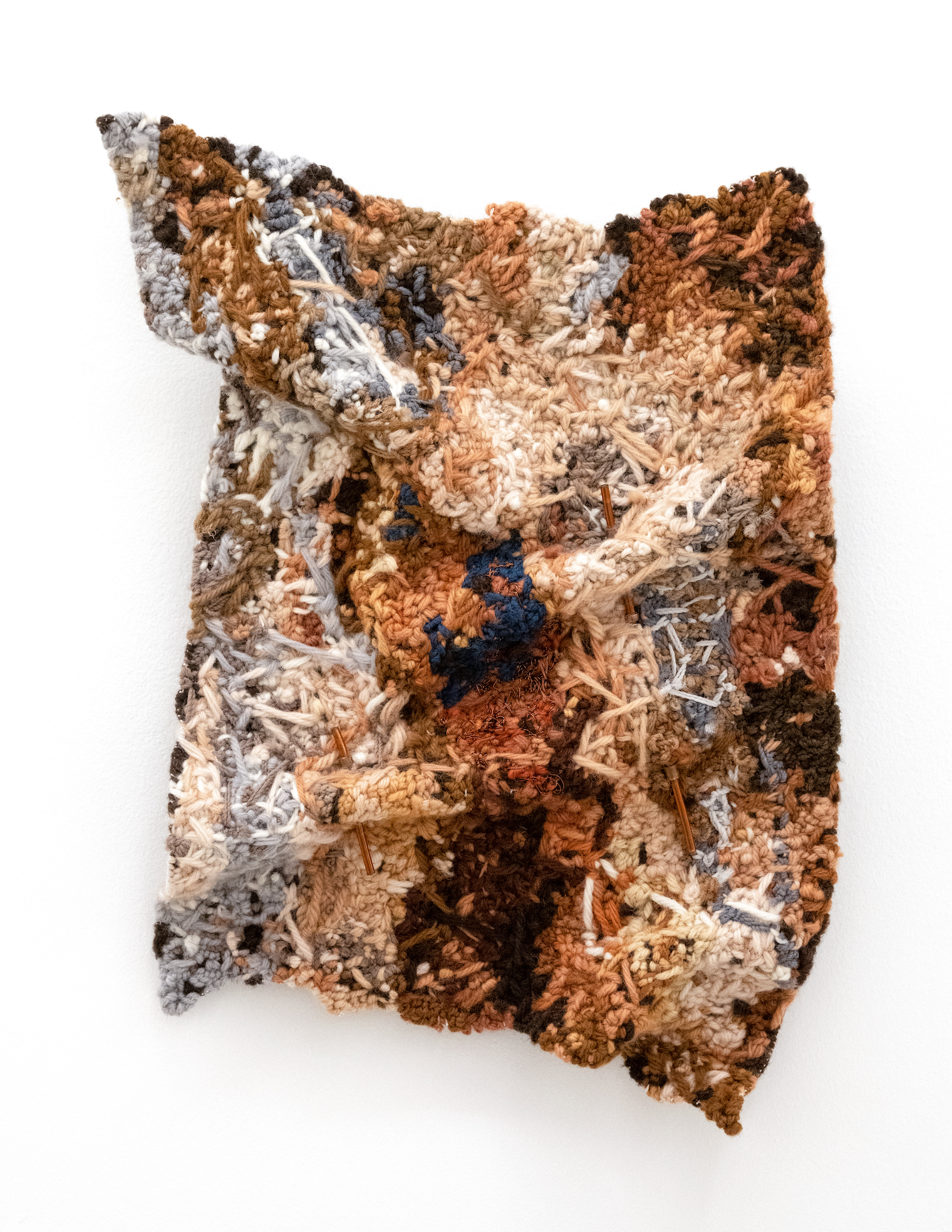

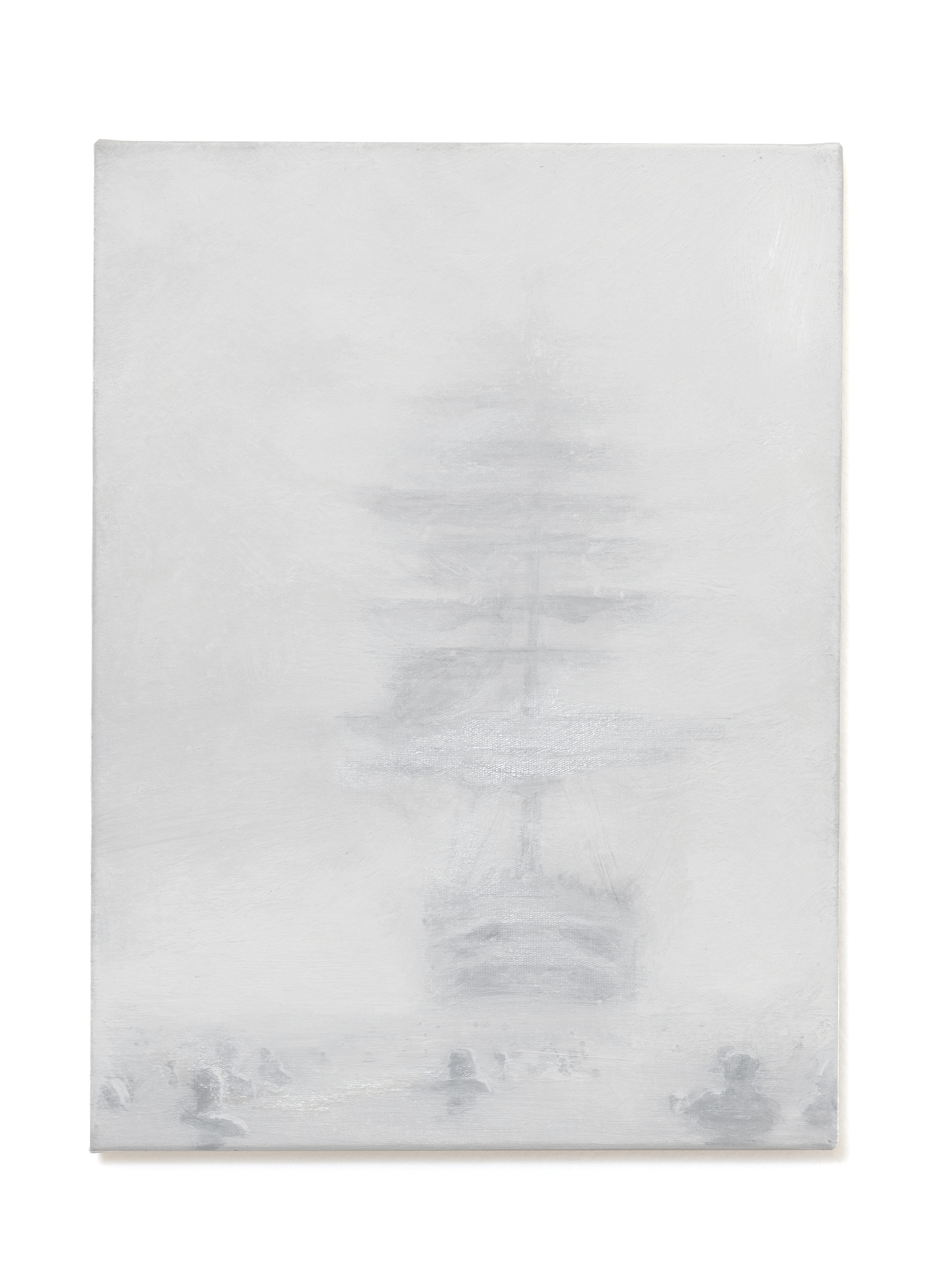





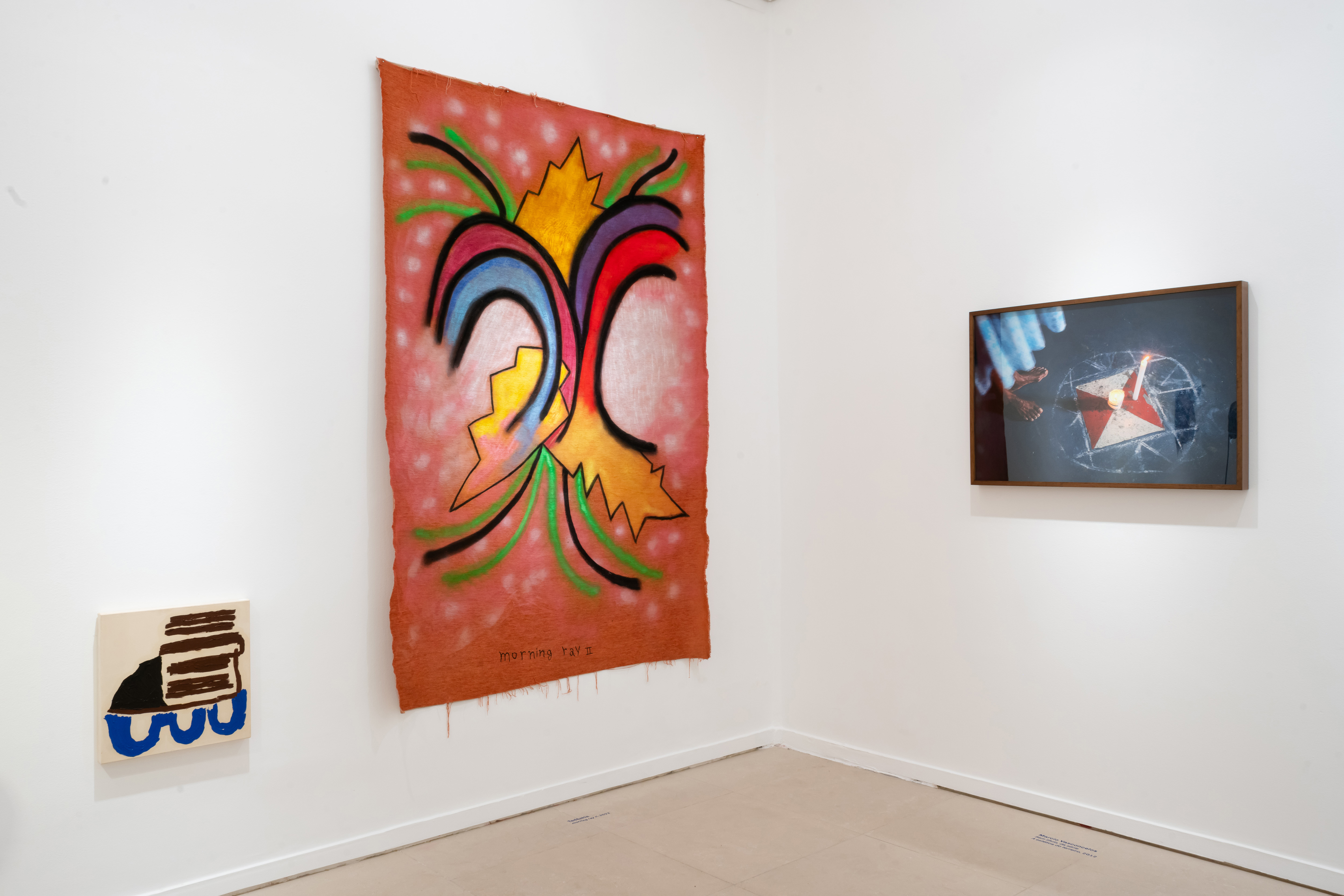

Maré ilustra o rompante de força natural que oscila pela atração gravitacional entre a lua e a terra sobre a água do mar. Na quebra das ondas sobre a orla, ela se dissipa em som, cheiro e atmosfera. Além de fenômeno geofísico, a maré é potência imaterial concentrada e viva; é entidade multissensorial que provoca a calma do pertencimento, das relações de conforto entre o corpo e o lugar. Retoma um pensamento expandido e hiperconectado, em que as situações macrocósmicas interferem nas subjetividades espirituais e nos eventos físicos menores. Rege o que se serve à mesa, do defeso à rede cheia; o que vem ao mundo e dá à luz; o banho à preamar. Sabe-se que se é de um lugar pela maré — não só água física, mas fluxo memorial mesmo de onde não há água, de lembranças que oscilam e constituem a noção de lar. Na maré, se espelha a volta de ancestralidades perdidas nas violências atlânticas, capilarizadas pelos rios que entremeiam a nossa terra.


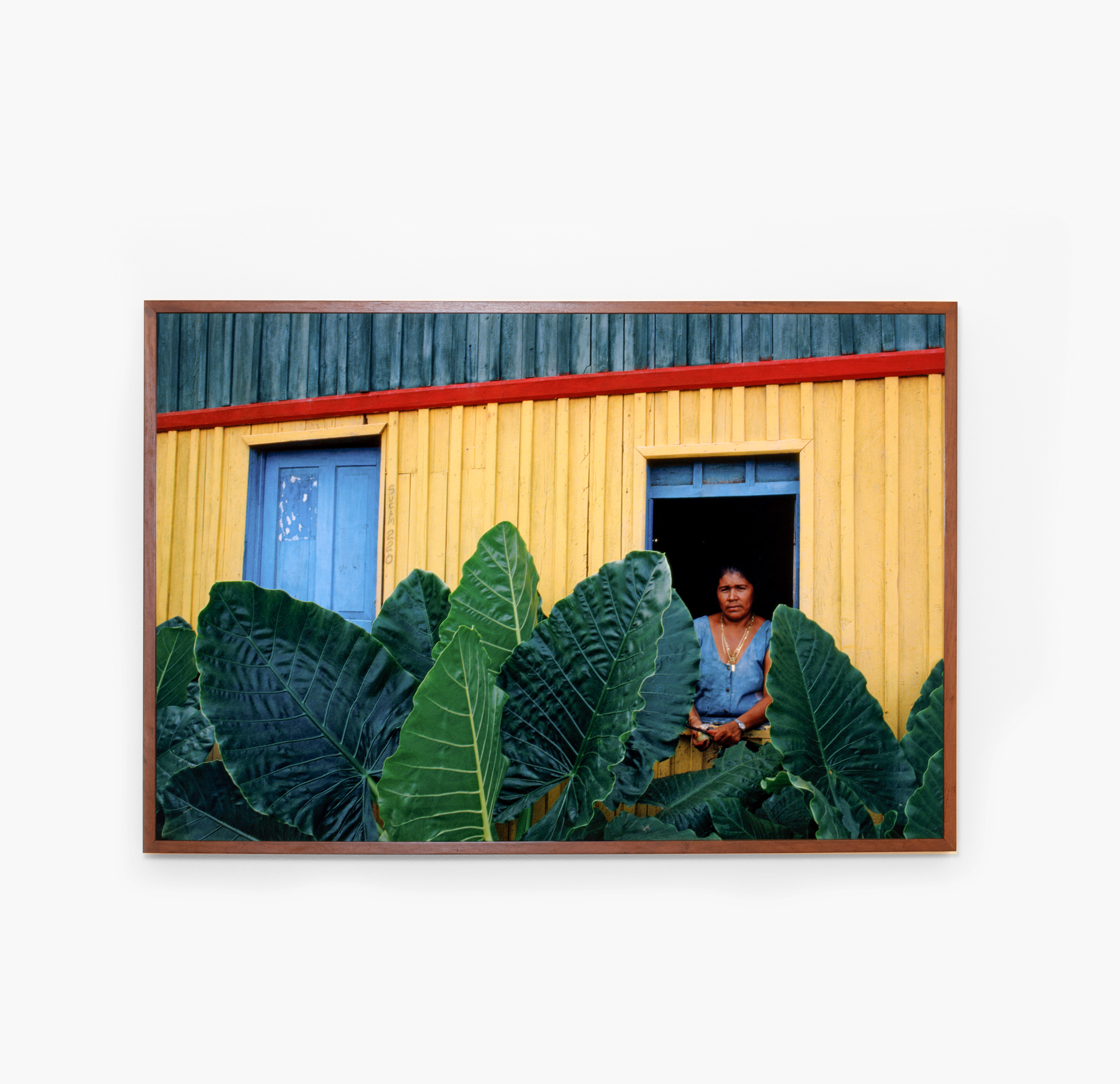

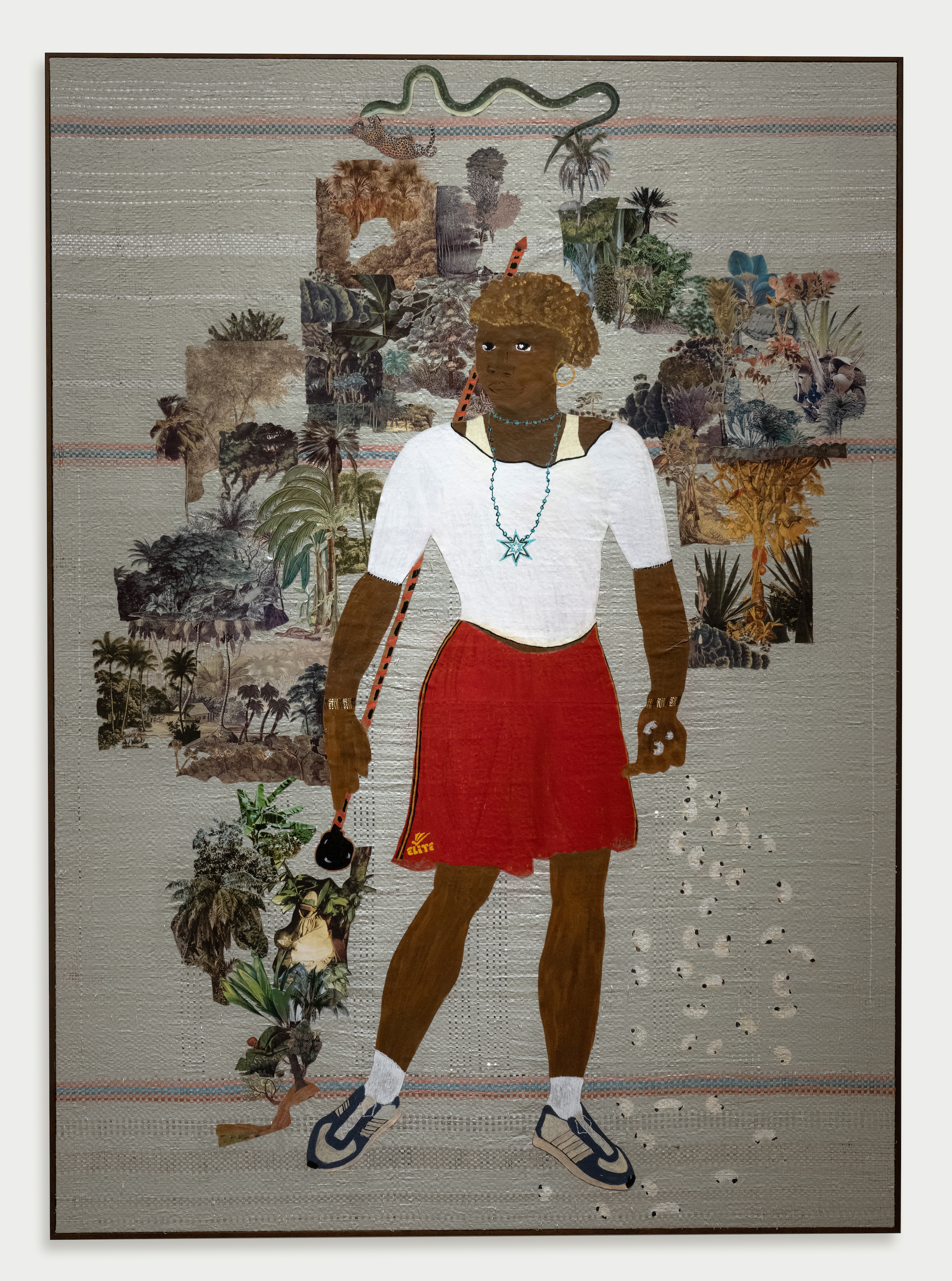


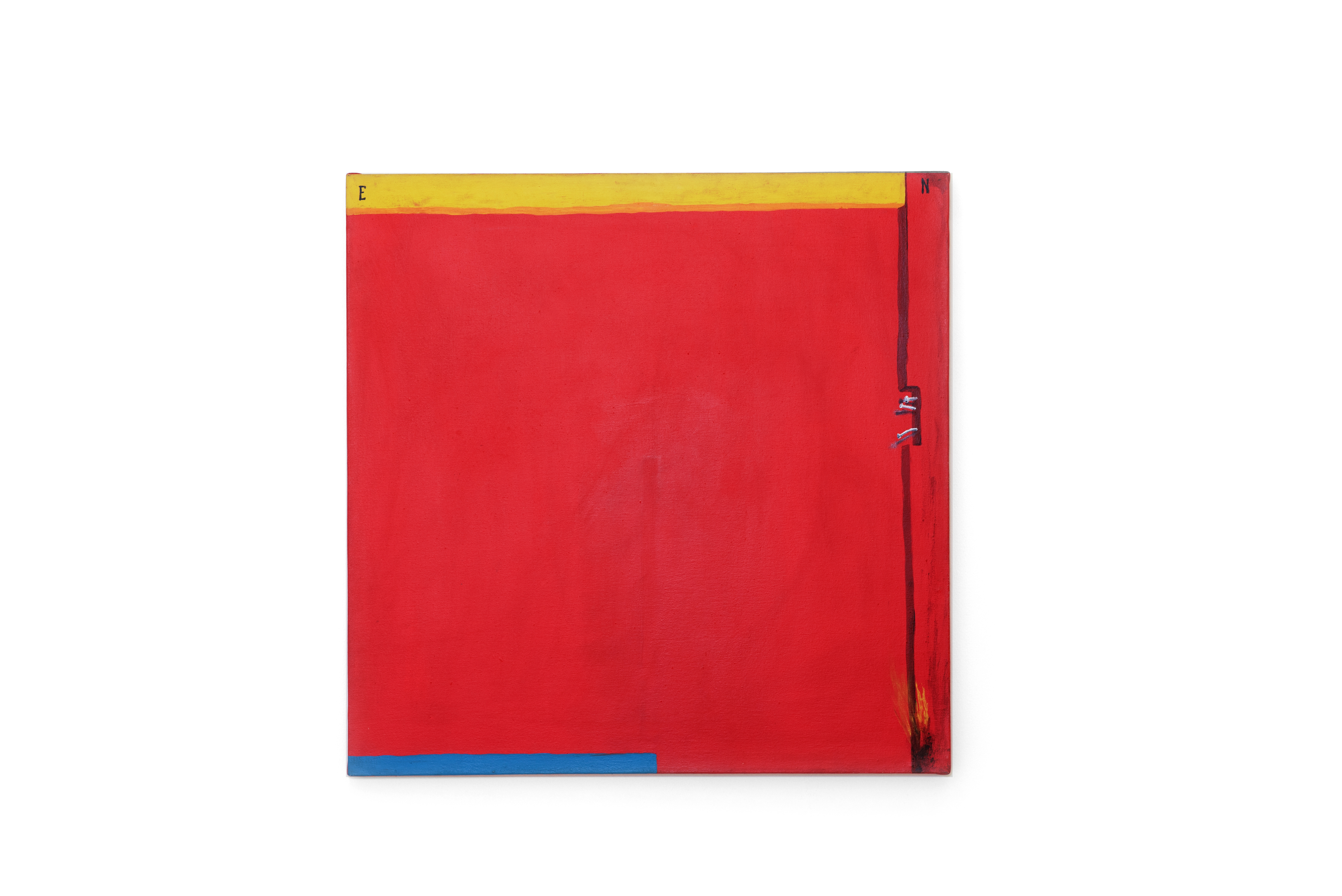


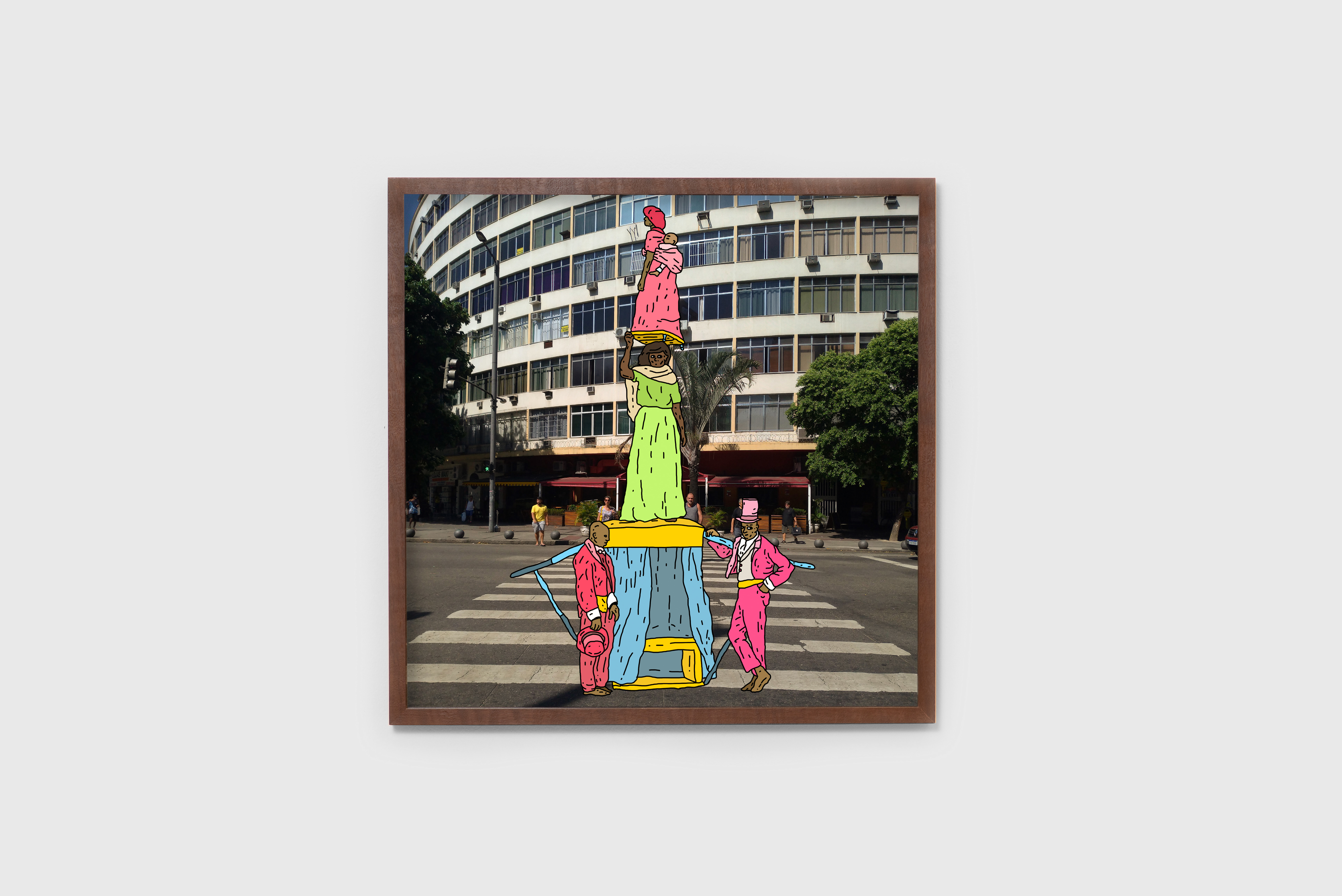
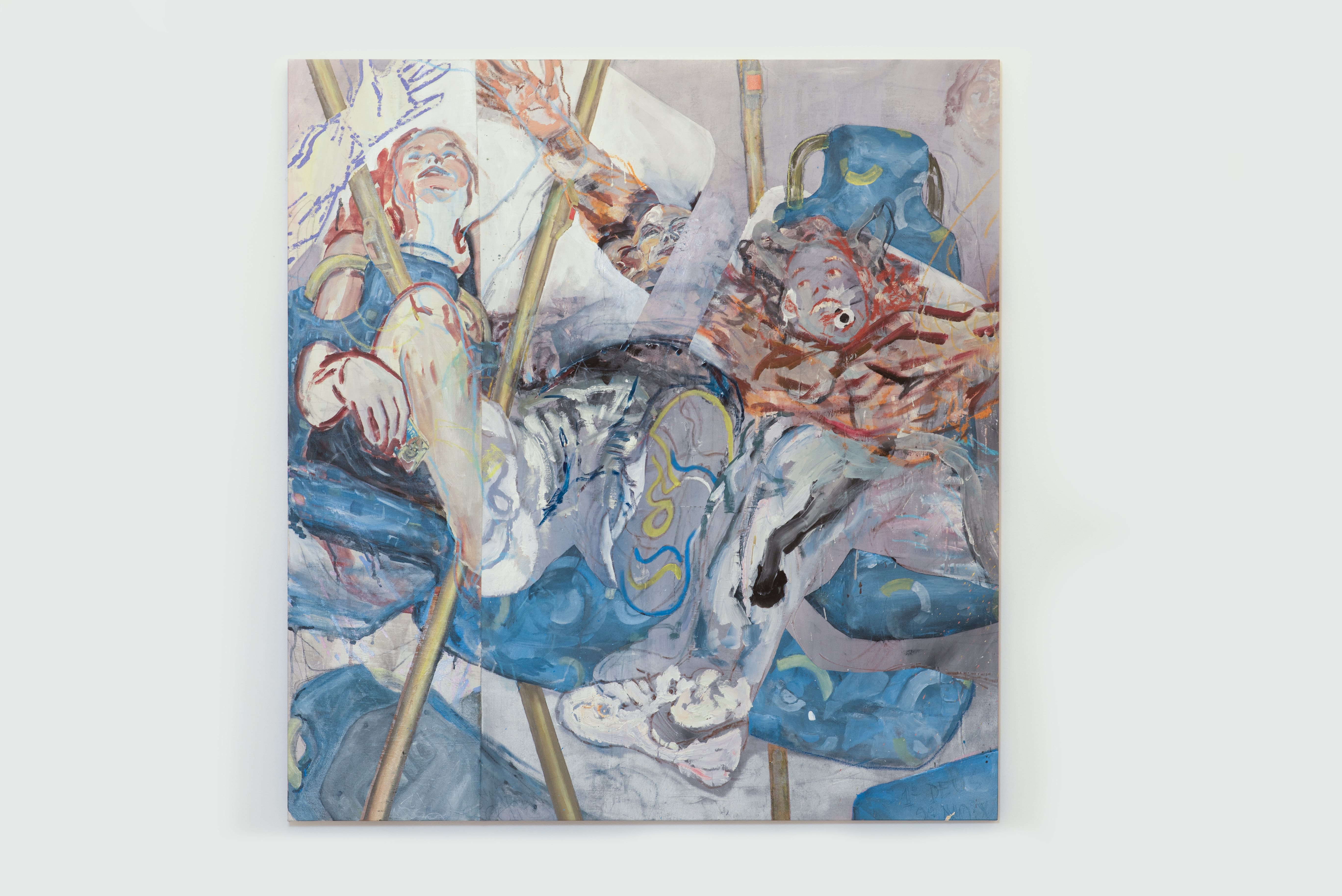


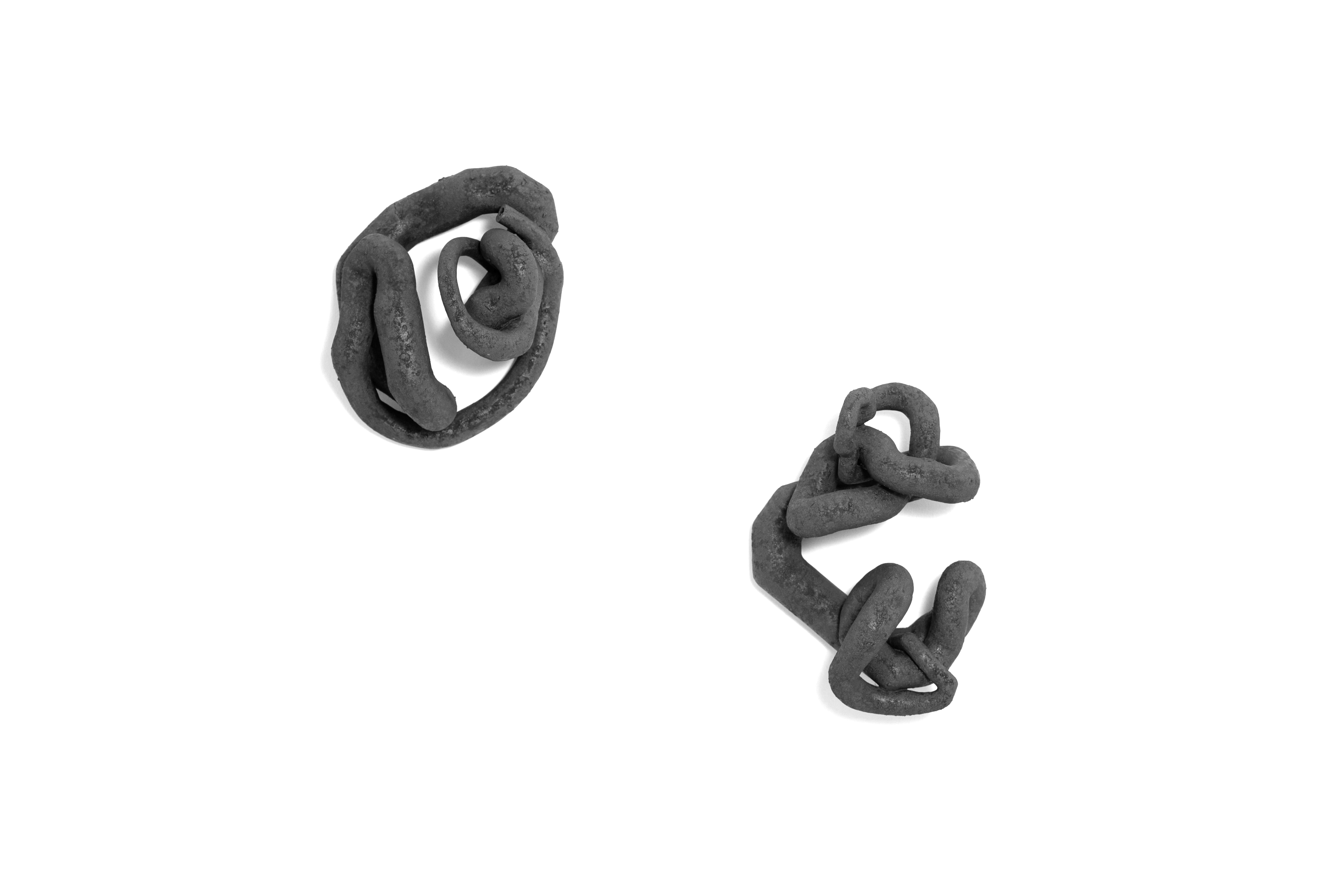








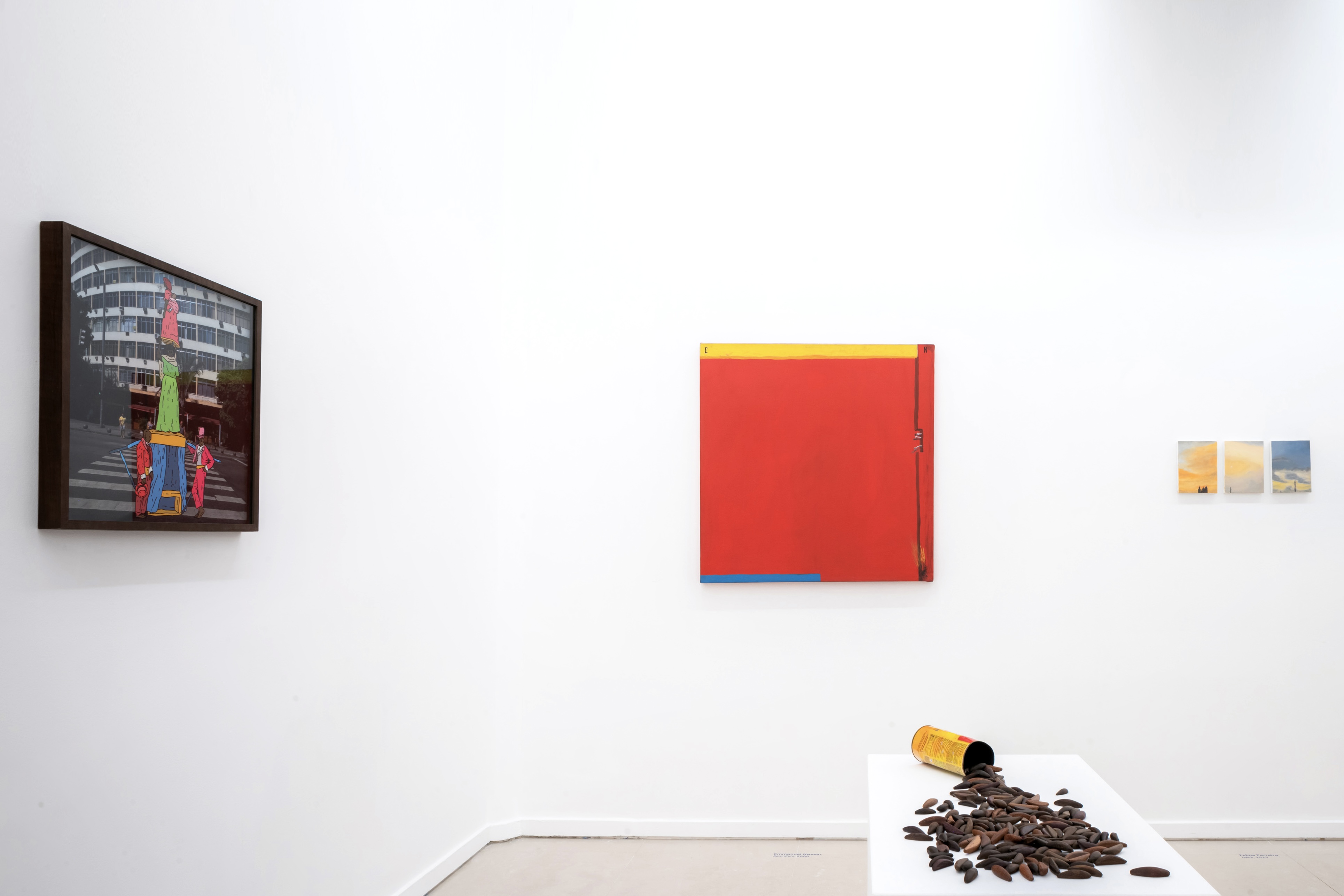

Memória reflete sobre a fragmentação de lembranças individuais e autobiográficas, mas que podem operar em um senso memorial coletivo através de imagens atravessantes e sobreviventes. Como podemos falar coletivamente de memória, quando essa é tão íntima e pessoal? De que forma imagens podem transbordar as individualidades e abranger uma comoção coletiva, ricocheteando e transpassando novamente cada um dos observadores em pontos singulares? Questionador, o núcleo se propõe a analisar imagens e narrativas que fluem e esvanecem no tempo sem registro, amplificando a nostalgia do dispositivo memorial, ao mesmo tempo que propõe o resgate de lembranças apagadas ou perdidas, reelaboradas em novas imagens.
/
By the tide, by moonlight,
dances the mask that I carry in my memory.
The knots of the net and the lump in the throat
come and go and don't get tangled up,
but, as if hand in hand,
lead each other in the streams
of the water that breaks over the shore —
where there was the first kiss, the last cry,
the eternal dream.
I remember it all, even tomorrow.
Máscara, mare, memória [that can be translated as Mask, tide, memory] presents poetic and imagetic bridges between productions by active artists from the north and northeast region of Brazil amongst works by Brazilians from other geographies, proposing horizontal readings, without the hierarchical segregations imposed by the market and art institutions that privilege southeastern artists little rarely in Maranhão. From these multiple connections, the show argues that the local scene shares questioning cores with the national and international artistic panorama, not only proving false the notion of delay and underdevelopment usually linked to the region but exemplifying its pioneering spirit and sophistication, ahead in central issues in the artistic spheres.
Thus, although the works connect by many approaches, local specificities radiate in the multiple subjectivities of each artist. These singularities are displayed in an honorable way, rejecting notions of exoticism and naivety, highlighting the cultural hybridities that structure them through forced or voluntary historical exchanges. Amplifying these plural nuances, the exhibition is organized into three thematic cores that entitle it and that suggest reflections on the works.
Máscara [Mask] exhibit works that do not use the artifice of disguise as a denial of individuality but as a tool of other possibilities of existence, of searching for the body in plenitude in other realities. Cultural manifestations are painted, sewn, embroidered, and adorned by hands that invoke entities, adding or removing apparent layers to the living flesh of personal stories and desires to be(come). The mask, in its ambiguity, enables both an escape from the harshness of repression of socially oppressed bodies and a celebration and proud recovery of who one truly is — through and despite corporeality. It behaves as a transitional object and emphasizes the two instances it connects. Interpreted not as an instrument of illusion, the mask is raised like an honorably raised flag.
Maré [Tide] illustrates the surge of natural force that oscillates due to the gravitational attraction between the moon and the earth over seawater. As the waves crash over the shore, it dissipates into sound, smell, and atmosphere. In addition to being a geophysical phenomenon, the tide is a concentrated and living immaterial power; it is a multisensory entity that provokes the calmness of belonging, of the comfortable relations between the body and the place. It resumes an expanded and hyperconnected thought, in which macrocosmic situations interfere with spiritual subjectivities and smaller physical events. It governs what is served at the table, from closed season to full network; what comes into the world and gives birth; the bath at high tide. One knows that one is from a place by the tide — not just physical water, but a memorial flow even where there is no water, of memories that oscillate and constitute the notion of home. In the tide, the return of ancestors lost in the Atlantic violence is mirrored, capillarized by the rivers that intertwine our lands.
Memória [Memory] reflects on the fragmentation of individual and autobiographical memories but can operate in a collective memorial sense through traversing and surviving images. How can we altogether talk about memory, when it is so intimate and personal? How can images overflow individualities and encompass a collective commotion, ricocheting and passing through each of the observers again in singular points? Questioning, the nucleus proposes to analyze images and narratives that flow and disappear in unrecorded time, amplifying the nostalgia of the memorial device, at the same time that it proposes the rescue of erased or lost memories, re-elaborated in new images.
CURADORIA [CURATED BY]
Mateus Nunes
PROJETO GRÁFICO [GRAPHIC DESIGN]
Matheus Ramassini
PRODUÇÃO [PRODUCTION]
Gabriel Xavier
FOTOS DA EXPOSIÇÃO [INSTALLATION VIEWS]
Jesús Pérez
FOTOS DAS OBRAS [ARTWORKS REPRODUCTIONS]
João Henrique Lima, Jesús Pérez, Wesley Cristyan
AGRADECIMENTOS [THANKS TO]
Aos artistas convidados [To the invited artists]; a Germano Dushá, Lucas Nunes, Marco Antonio Lima, Fatima Lima, João Henrique Lima e [and] Luis Felipe Lima; às galerias [to the galleries] Albuquerque Contemporânea, Almeida & Dale, Amparo 60, Carmo Johnson Projects, Fortes D’Aloia & Gabriel, Leonardo Leal, Leme, Mendes Wood DM, Millan, Mitre, Sé, Superfície, VERVE.
Texto originalmente publicado na exposição ‘Máscara, maré, memória’, na Lima Galeria, em São Luís, inaugurada em 15 de junho de 2023